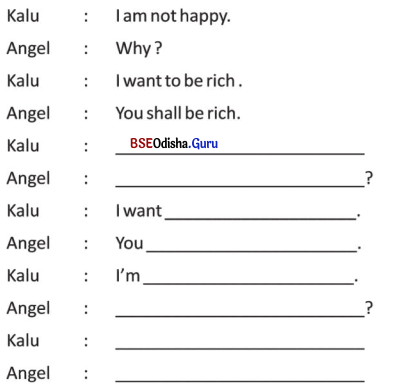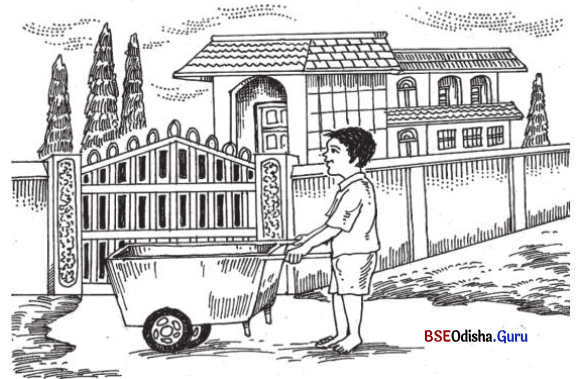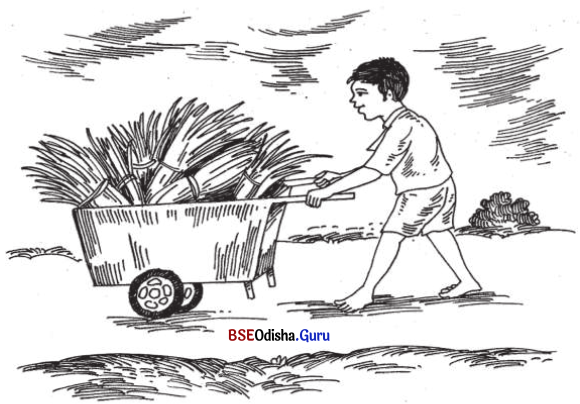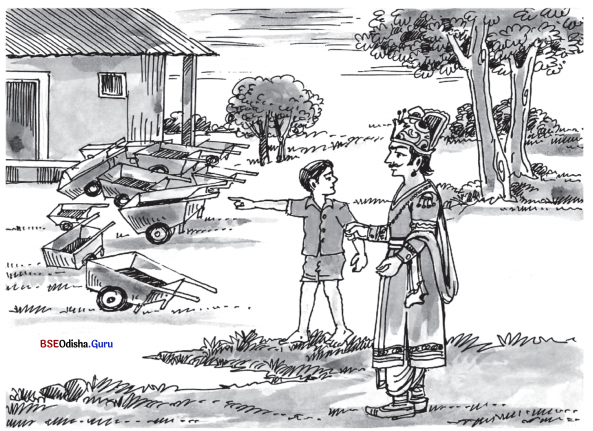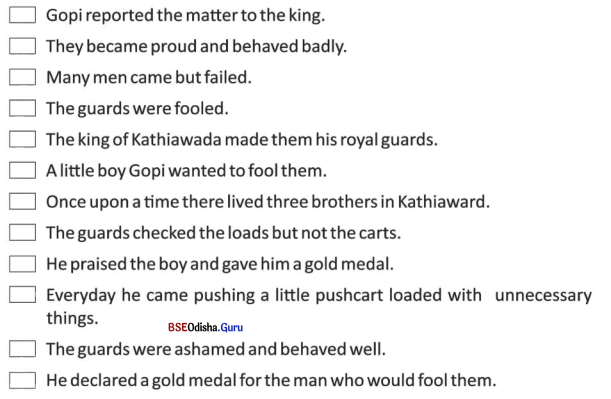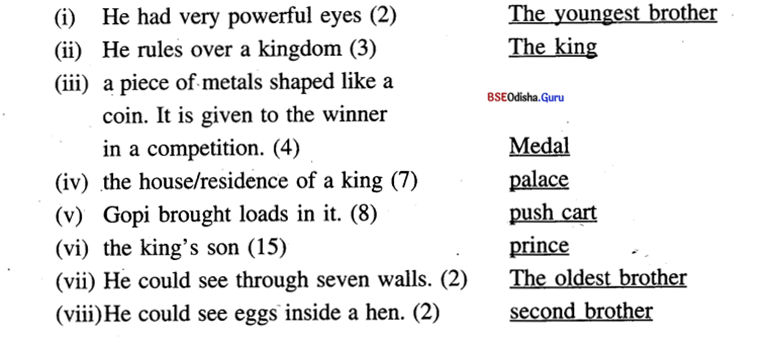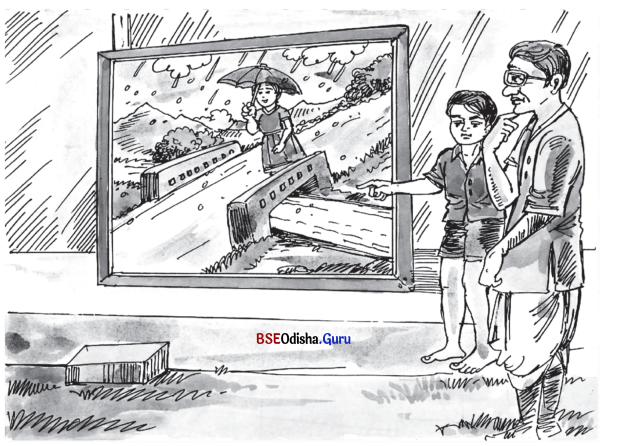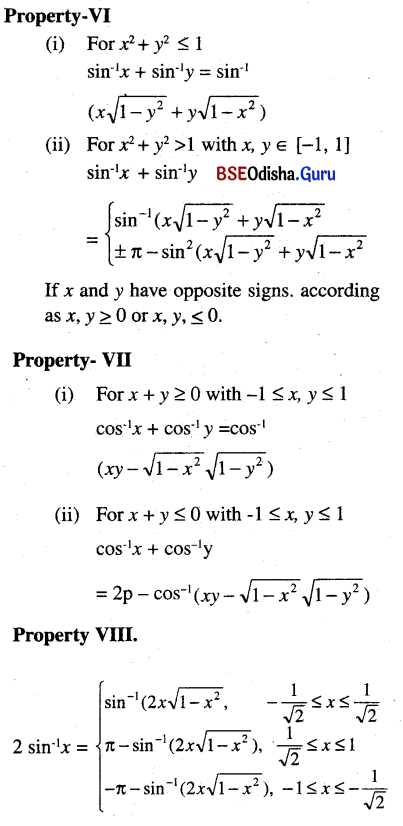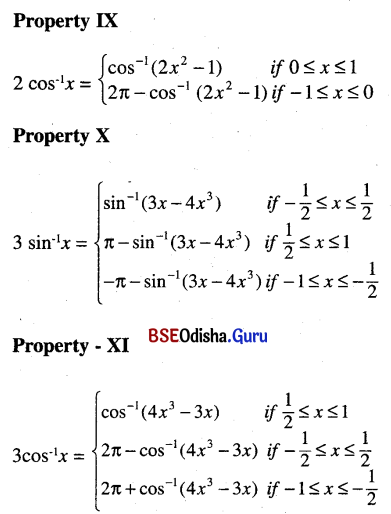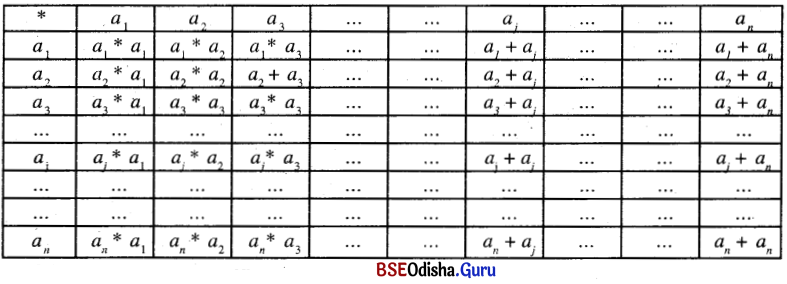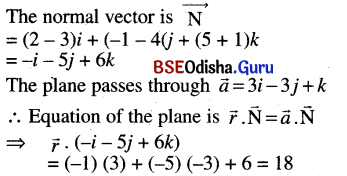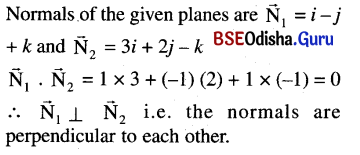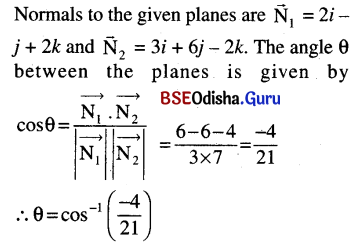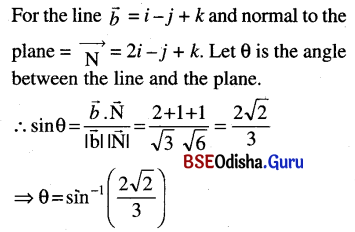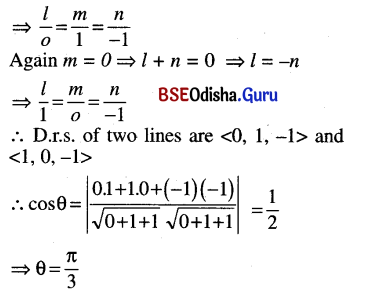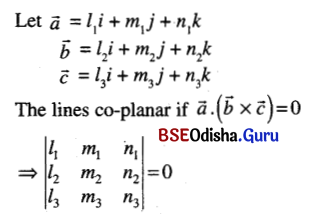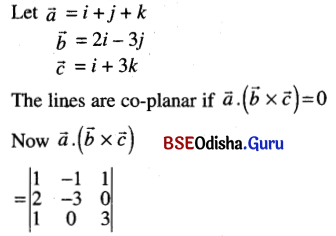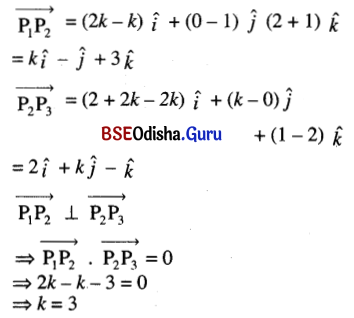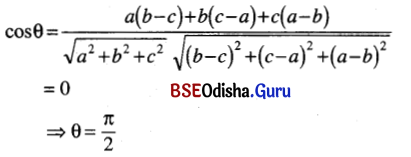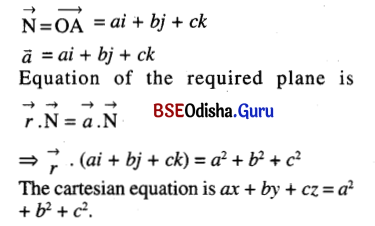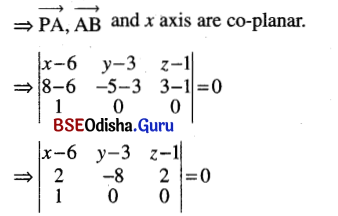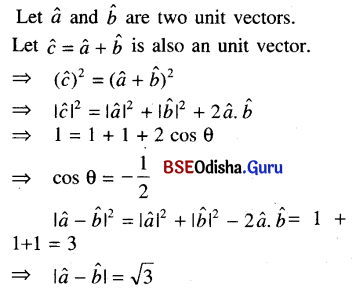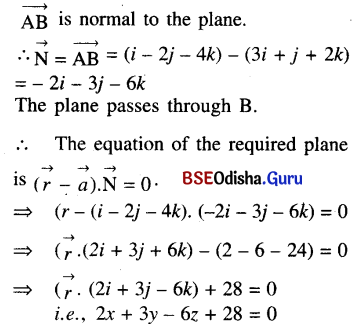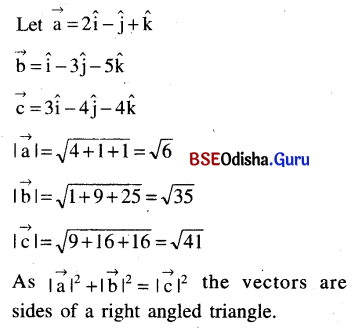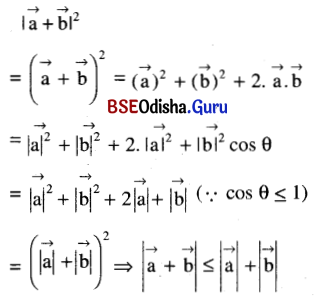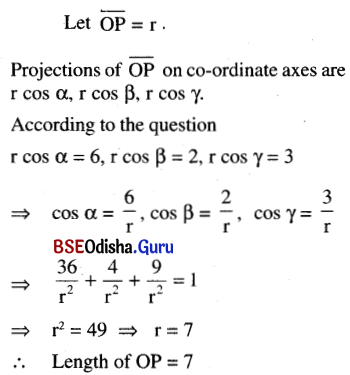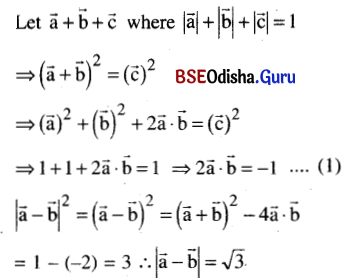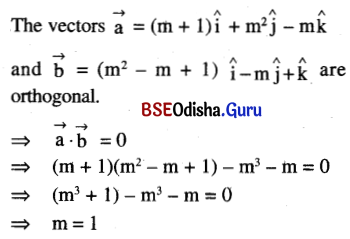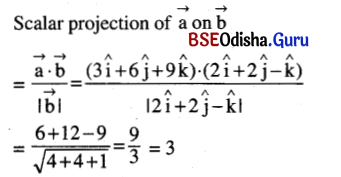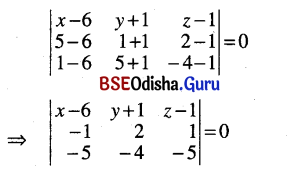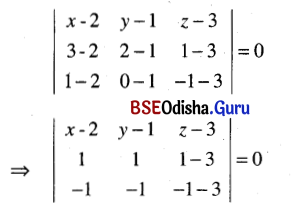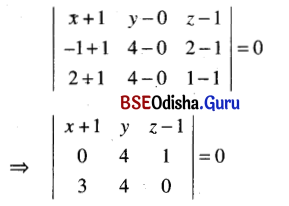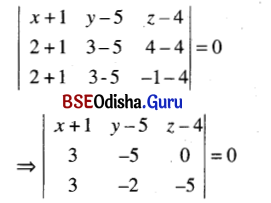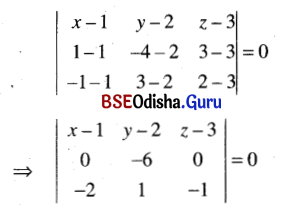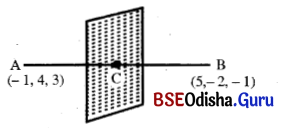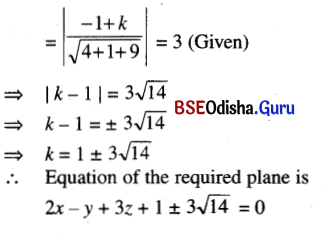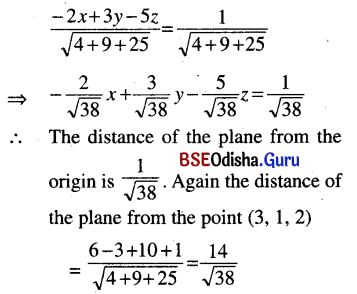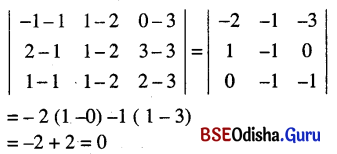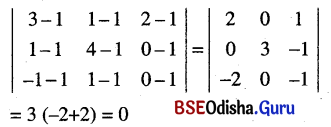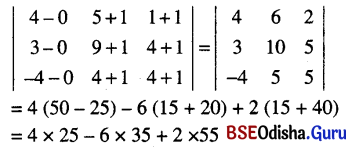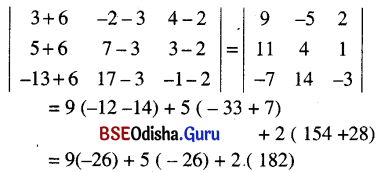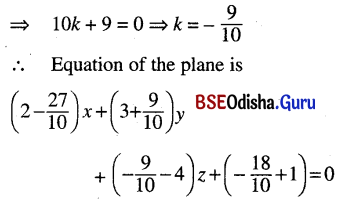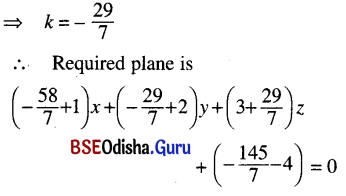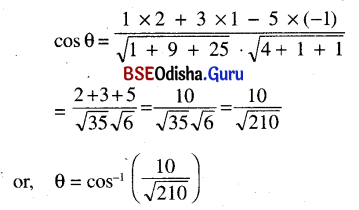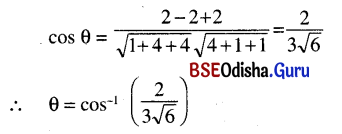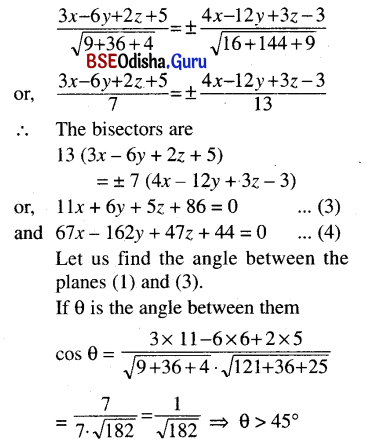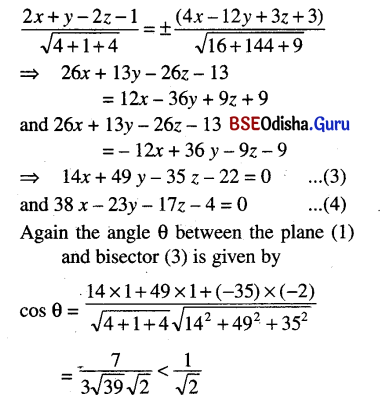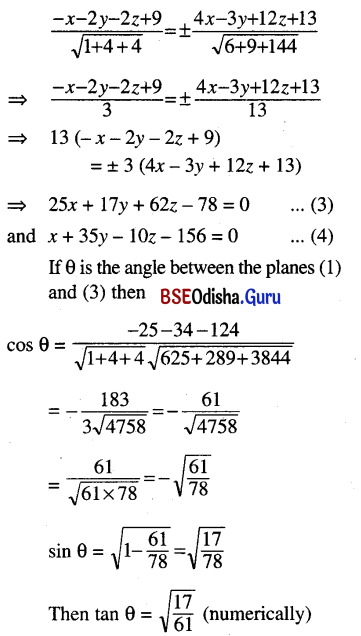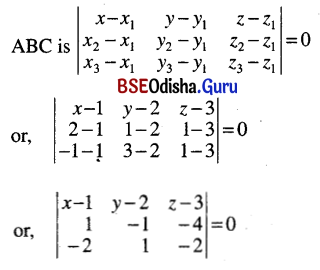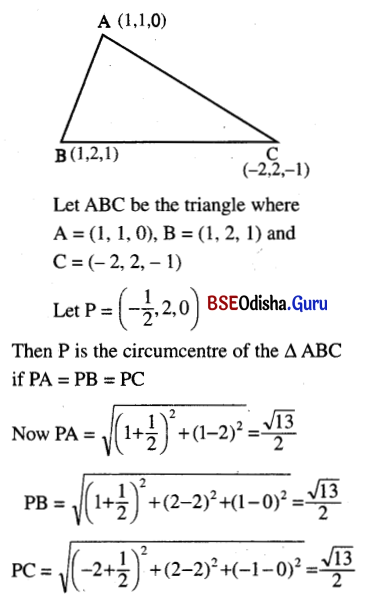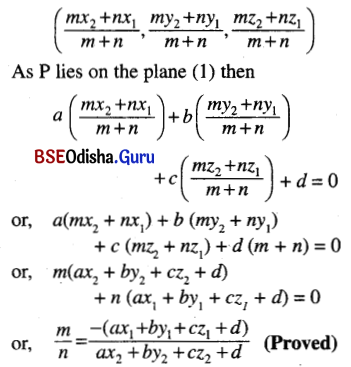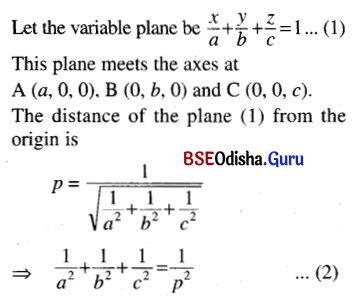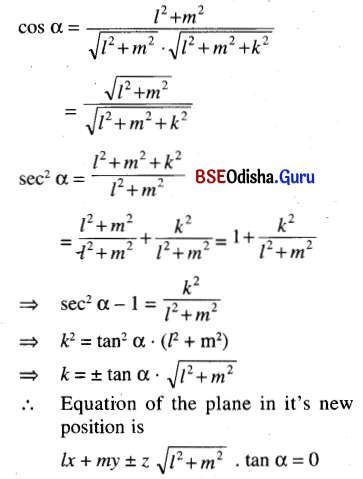Odisha State Board BSE Odisha 9th Class Hindi Solutions Chapter 2 ममता Textbook Exercise Questions and Answers.
BSE Odisha Class 9 Hindi Solutions Chapter 2 ममता
प्रश्न और अभ्यास (ପ୍ରଶ୍ନ ଔର୍ ଅଭ୍ୟାସ)
1. निम्नलिखित प्रश्नों के उत्तर दो-तीन वाक्यों में दीजिए।
(ନିମ୍ନଲିଖୂ ପ୍ରଶ୍ନ କେ ଉତ୍ତର୍ ଦୋ-ତୀନ୍ ବାର୍କେ ମେଁ ଦୀଜିଏ )।
(ନିମ୍ନଲିଖତ ପ୍ରଶ୍ନଗୁଡ଼ିକର ଉତ୍ତର ଦୁଇ-ତିନୋଟି ବାକ୍ୟରେ ଦିଅ ।)
(क) ‘ममता’ कहानी का सारमर्म अपने शब्दों में लिखिए।
(‘ମସ୍ତା’ କହାନୀ କା ସାରମର୍ମ ଅତ୍ମନେ ଶବ୍ଦା ମେଁ ଲିଖୁଏ )।
(‘ମମତା’ କାହାଣୀର ସାରମର୍ମ ନିଜ ଭାଷାରେ ଲେଖି ।)
उत्तर:
ममता मध्ययुग के रोहतास दुर्ग के ब्राह्मण मन्त्री चूड़ामणि की विधवा पुत्री है। पहले माता और कुछ दिनों के बाद पठानों से हुए संघर्ष में ममता के पिता का मौत हो गयी। मगर मुगल बादशाह हुमायूँ चौसा- युद्ध में शेरशाह से हारकर एक रात ममता की झोंपड़ी में आश्रय लिया। ममता को हुमायूँ का परिचय मालूम न होते हुए भी झोपड़ी में आश्रय देती है। एवं स्वंय पास की टूटी दीवारों में चली जाती। इसके साथ ४७ सालों के बाद अकवर मुगल बादशाह बनते हैं। उस स्थान पर हुमायूँ की स्मृति में एक अष्टकोण मन्दिर बनवाया जाता है, पर मन्दिर में ममता का नाम कहीं भी लिखा नहीं जाता।
(ख) ‘ममता’ कहानी का मुख्य चरित्र कौन है? उसकी चारित्रिक विशेषताओं को बताइए।
(‘ମମ୍’ କହାନୀ କା ମୁଖ୍ୟ ଚରିତ୍ର କୌନ୍ ହୈ ? ଉସ୍ ଚାରିତ୍ରିକ୍ ୱିଶେଷତାଓଁ କୋ ବତାଇଏ)।
(ମମତା କାହାଣୀର ମୁଖ୍ୟ ଚରିତ୍ର କିଏ ? ତାହାର ଚାରିତ୍ରିକ ବିଶେଷତ୍ଵ କୁହ ।)
उत्तर:
ममता कहानी का मुख्य चरित्र रोहतास दुर्ग के ब्राह्मण मन्त्रो चूड़ामणि की विधवा बेटी ‘ममता’ है। पिताजी पुत्री को स्वर्ण मुद्रा भेंट करते है लेकिन नि: लोभता से यह भेंट ठुकरा देती है। चूड़ामणि के देहान्त के बाद रोहताश दुर्ग को शेरशाह अधिकार कर लिया और ममता एक बौद्ध मठ के खण्डहरों में जा छिपती है। मुगल बादशाह हुमायूँ एक रात ममता की झोंपड़ी में आश्रय के लिए भिक्षा माँगते और आश्रय पाते हैं मगर ममता पास की टूटी दीवारों में चली जाती है। इससे ममता की कंलक मुक्त चारित्रिक साबित हुआ। वह कहती है मैं ब्राह्मण हू, मुझे तो अपने धर्म- अतिथी देव की उपासना का पालन करना चाहिए।
(ग) इस कहानी से आपको क्या प्रेरणा मिलती है?
(ଇସ୍ କହାନୀ ସେ ଆପ୍ କ୍ୟା ପ୍ରେରଣା ମିଲ୍ ହୈ ?)
(ଏହି କାହାଣୀରୁ ଆପଣଙ୍କୁ କ’ଣ ପ୍ରେରଣା ମିଳୁଛି ?)
उत्तर:
ब्राह्मण – मन्त्री चूड़ामणि की स्नेहममता विधवा बेटी ममता पर निदक झलक है। ममता विधवा हिन्दु नारी चरित्रको अक्षुर्ण रख सकती। उसने अपने जीवन को मानव सेवा में उत्सर्गिकृत करदिया। उस के साल हमें जीवन में संघर्ष करते हुए जीना चाहिए हमें अपने धर्म और कर्त्तव्य का कभी नहीं छोड़ना चाहिए। विपन्न समय में आए हुए शरणागती की रक्षाकरनी चाहिए।
(घ) इस कहानी में लेखक का उद्देश्य स्पष्ट कीजिए।
(ଇସ୍ କହାନୀ ମେଁ ଲେଖକ କା ଉଦ୍ଦେଶ୍ୟ ସ୍ପଷ୍ଟ କୀଜିଏ) ।
(ଏହି କାହାଣୀରେ ଲେଖକଙ୍କ ଉଦ୍ଦେଶ୍ୟ ସ୍ପଷ୍ଟ କର ।)
उत्तर:
इस कहानी में जयशंकर प्रसाद ने हिन्दू ब्राह्मणो विधवा ‘ममता’ के माध्यम से भारतीय संस्कृति और पारंपरिक मुल्यवोध को दर्शाया गया। यहाँ हिन्दू और मुसलमान दोनो धर्म को चर्चा करने के साथ विधवा चरित्र एक कलंकमुक्त, परोपकारी, निर्लोभ, निर्भिक, अतिथिसेवा और कामना वासना गुणो को त्याग करने का आदि विशेष गुणों का निच्छक प्रतिछवि स्पष्ट रूप से चित्रित होसका है।

2. निम्नलिखित प्रश्नों का उत्तर एक या दो वाक्यों में दीजिए।
(ନିମ୍ନଲିଖୂ ପ୍ରଶ୍ନ କା ଉତ୍ତର୍ ଏକ୍ ୟା ଦୋ ବାର୍କେ ମେଁ ଦୀଜିଏ) ।
(ନିମ୍ନଲିଖ ପ୍ରଶ୍ନଗୁଡ଼ିକର ଉତ୍ତର ଗୋଟିଏ ବା ଦୁଇଟି ବାକ୍ୟରେ ଦିଅ ।)
(क) रोहतास दुर्ग के प्रकोष्ठ में बैठी हुई युवती ममता किसे देख रही थी?
(ରୋହତାସ୍ ଦୁର୍ଗ କେ ପ୍ରକୋଷ୍ଠ ମେଁ ବୈଠୀ ହୁଈ ୟୁବତୀ ମମତା କିସ୍ ଦେଖ୍ ରହୀ ଥୀ ?)
(ରୋହତାସ ଦୁର୍ଗର ପ୍ରକୋଷ୍ଠରେ ଯୁବତୀ ମମତା ବସିରହି କ’ଣ ଦେଖୁଥିଲା ?)
उत्तर:
रोहतास दुर्ग के प्रकोष्ठ में बैठी हुई युवती ममता शोण के तीक्ष्ण गम्भीर प्रवाह को देख रही थी।
(ख) ममता का यौवन किसके समान उमड़ रहा था?
(ମମତା କା ଯୌବନ୍ କିସ୍ ସମାନ୍ ଉମଡ଼୍ ରହା ଥା ?)
(ମମତାର ଯୌବନ କାହା ସହିତ ଆବେଗତା ସୃଷ୍ଟି କରୁଥିଲା ?)
उत्तर:
ममता का यौवन शोण के समान उमड़ रहा था।
(ग) संसार में सबसे तुच्छ निराश्रय प्राणी कौन है?
(ସଂସାର୍ ମେଁ ସବ୍ ତୁଚ୍ଛ ନିରାଶ୍ରୟ ପ୍ରାଣୀ କୌନ୍ ହୈ ?)
(ସଂସାରରେ ସବୁଠାରୁ ତୁଚ୍ଛ ନିରାଶ୍ରୟ ପ୍ରାଣୀ କିଏ ?)
उत्तर:
संसार में सबसे तुच्छ निराश्रय प्राणी हिन्दू विधवा है।
(घ) चूड़ामणि क्यों व्यथित हो गये ?
(ଚୂଡ଼ାମଣି କ୍ୟା ବ୍ୟର୍ଥିତ ହୋ ଗୟେ ?)
(ଚୂଡ଼ାମଣି କାହିଁକି ବ୍ୟସ୍ତ ହୋଇଗଲେ ?)
उत्तर:
शोण के प्रवाह में ममता अपना जीवन मिलाने में बेसुध होने के साथ पिता का आना नहीं जानसकी, इसलिए चुडामणी व्यथित हो गये।
(ङ) ममता ने पिता का उपहार क्यों स्वीकार नहीं किया?
(ମମ୍ତା ନେ ପିତା କା ଉପହାର୍ ଜ୍ୟୋ ସ୍ଵୀକାର ନହୀ କିୟା ?
(ମମତା କାହିଁକି ପିତାଙ୍କ ଉପହାର ସ୍ଵୀକାର କଲା ନାହିଁ ?)
उत्तर:
ममता ने पिता का उपहार इसलिए स्वीकार नहीं किया कि म्लेच्छ का उत्कोच स्वीकार करना ठीक नहीं है। हम लोग ब्राह्मण है, इतना सोना लेकर क्या करेंगे ?
(च) चूड़ामणि का हृदय क्यों धक् धक् करने लगा ?
(ଚୂଡ଼ାମଣି କା ହୃଦୟ ବ୍ୟୋ ଧକ୍-ଧକ୍ କର୍ନେ ଲଗା ?)
(ଚୂଡ଼ାମଣିର ହୃଦୟ କାହିଁକି ଧକ୍-ଧକ୍ କଲା ?)
उत्तर:
जब डोलियों का तांता भीतर आ रहा था तब चूड़ामणि का हृदय धक् धक् करने लगा।
(छ) ब्राह्मण – मन्त्री कैसे मारा गया?
(ବ୍ରାହ୍ମଣ-ମନ୍ତ୍ରୀ କୈସେ ମାରା ଗୟା ?)
(ବ୍ରାହ୍ମଣ-ମନ୍ତ୍ରୀଙ୍କୁ କିପରି ମାରି ଦିଆଗଲା ?)
उत्तर:
चुडामणी ने जाकर रोहतास दुर्ग के तोरण निकट की डोलियों का आवरण खुलवाना चाहा। पठानों ने कहा – यह महिलाओं का अपमान करना है। बात बढ़ गयी, तलवारों खिचीं ब्राह्मण मंत्री मारा गया।
(ज) मौर्य और गुप्त सम्राटों की कीर्त्ति का खण्डहर कहाँ था?
(ମୌର୍ଯ୍ୟ ଔର୍ ଗୁପ୍ତ ସମ୍ରାଟୋ କୀ କୀର୍ଜୀ କା ଖଡ୍ଗର୍ କହାଁ ଥା ?)
(ମୌର୍ଯ୍ୟ ଏବଂ ଗୁପ୍ତ ସମ୍ରାଟ ମାନଙ୍କର କୀର୍ତ୍ତିର ଭଗ୍ନସ୍ତୂପ କେଉଁଠାରେ ଥିଲା ?)
उत्तर:
काशी के उत्तर धर्मचक्र बिहार मौर्य और गुप्त सम्राटो की कीर्ति का खंडहर था।
(झ) भारतीय शिल्प की विभूति कहां बिखरी हुई थी ?
(ଭାରତୀୟ ଶିଳ୍ପୀ ବିଭୂତୀ କହାଁ ବିଖରୀ ହୁଇ ଥୀ ?)
(ଭାରତୀୟ ଶିଳ୍ପର ଚମତ୍କାରିତା କେଉଁଠି ଝଟକୁଥିଲା ?)
उत्तर:
भारतीय शिल्प की विभूति भग्नचूड़ा, तृणा-गुल्मों से ढके हुए प्राचीर ईटो के ढेर में बिखरी हुई थी।
(ञ) ‘सब विधर्मी दया के पात्र नहीं’ – ऐसा ममता ने क्यों कहा?
(‘ସବ୍ ବିଧର୍ମୀ ଦୟା କେ ପାତ୍ର ନେହୀ ଐସା ମମତା ନେ କ୍ୟା କହା ?)
(ସବୁ ବିଧର୍ମୀ ଦୟାର ପାତ୍ର ନୁହଁନ୍ତି ଏପରି ମମତା କାହିଁକି କହିଲା ?)
उत्तर:
जब ममता सोचा कि मेरे पिता का वध करने वाले आततायी ये घायल व्यक्ति है। जो मुझसे आश्रय माँगते है तब ममता ने कहा – सब विधर्मी दया का पात्र नहीं होते।
(ट) स्त्री क्या विचार कर रही थी?
(ସ୍ତ୍ରୀ କ୍ୟା ବିଚାର କର ରହୀ ଥୀ ?)
(ସ୍ତ୍ରୀ କ’ଣ ବିଚାର କରୁଥିଲା ?)
उत्तर:
स्त्री विचार कर रही थी – “मै ब्राह्मण हूँ, मुझे तो अपने धर्म – अतिथि देव की उपसना का पालन करना चाहिए, परन्तु यहाँ सब विधर्मी दया के पात्र नहीं, मगर दया तो नहीं कर्त्तव्य करना है।
(ठ) ममता ने मन में क्या कहा?
(ମମତା ନେ ମନ୍ ମେଁ କ୍ୟା କହା ?)
(ମମତା ମନକୁ କ’ଣ କହିଲା ?)
उत्तर:
ममता ने मन में कहा- “यहाँ कौन दुर्ग है। यही झोंपड़ी है, जो चाहे ले लो, मुझे तो अपना कर्त्तव्य करना पड़ेगा।”
(ड) किसके प्रकाश में मुगल ने ममता का मुखमण्डल देखा?
(କିସ୍ ପ୍ରକାଶ୍ ମେଁ ମୁଗ୍ ନେ ମମ୍ କା ମୁର୍ଖମଣ୍ଡଲ୍ ଦେଖା ?)
(କାହାର ଆଲୋକରେ ମୋଗଲ ମମତାର ମୁଖ ଦେଖିପାରିଲା ?)
उत्तर:
चन्द्रमा के प्रकाश में मुगल ने ममता का मुखमण्डल देखा।
(ढ) ममता ने मुगल से क्या कहा?
(ମମତା ନେ ମୁଗଲ୍ ସେ କ୍ୟା କହା ?)
(ମମତା ମୁଗଲକୁ କ’ଣ କହିଲା ?)
उत्तर:
ममता ने मुगल से कहा- “क्या आश्चर्य है कि तुम भी छल करो ।”
(ण) प्रभात में खण्डहर की सन्धि से ममता ने क्या देखा?
(ପ୍ରଭାତ୍ ମେଁ ଖଣ୍ଡହର୍ କୀ ସନ୍ଧୀ ସେ ମମ୍ ନେ କ୍ୟା ଦେଖା ?)
(ସକାଳୁ ଭଗ୍ନ କୁଡ଼ିଆର ଫାଙ୍କରେ ମମତା କ’ଣ ଦେଖୁଲା ?)
उत्तर:
प्रभात में खण्डहर की सन्धि से ममता ने सैकड़ों अश्वारोहियों को देखा।
(त) किस युद्ध को बहुत दिन बीत गये?
(କିସ୍ ୟୁଦ୍ଧ କୋ ବହୁତ୍ ଦିନ୍ ବୀଡ଼ଗୟେ ?)
(କେଉଁ ଯଦ୍ଧ ବହୃତ ଦିନ ହୋଇଗଲାଣି ?)
उत्तर:
चौसा के मुगल-पठान युद्ध को बहुत दिन बीत गये।
(थ) हुमायूँ ने एक दिन कहाँ विश्राम किया था?
(ହୁମାମୁଁ ନେ ଏକ ଦିନ୍ କହାଁ ୱିଶ୍ରାମ୍ କ୍ରିୟା ଥା ?)
(ହୁମାମୁଁ ଦିନେ କେଉଁଠି ବିଶ୍ରାମ କରିଥିଲେ ?)
उत्तर:
हुमायूँ ने एक दिन ममता की झोंपड़ी में विश्राम किया था।
(द) हुमायूँ कौन था? उसका युद्ध किससे और कहाँ हुआ?
(ହୁମାମୁଁ କୌନ୍ ଥା ? ଉସ୍ ୟୁଦ୍ଧକସ୍ ଔର କହା ହୁଆ ?
(ହୁମାମୁଁ କିଏ ଥିଲେ ? ତାଙ୍କର ଯୁଦ୍ଧ କାହା ସହିତ ଓ କେଉଁଠି ହୋଇଥିଲା ?)
उत्तर:
हुमायूँ मुगल वादशाह थे। उसका युद्ध शेरशाह से चौसा में हुआ।
(ध) हुमायूँ ने मिरजा से क्या करने के लिए कहा?
(ହୁମାୟାଁ ନେ ମିରଜା ସେ କ୍ୟା କରନେ କେ ଲିଏ କହା ?)
(ହୁମାୟାଁ ମିରାଜାକୁ କ’ଣ କରିବାପାଇଁ କହିଲେ ?)
उत्तर:
हुमायूँ ने मिरजा से यह करने के लिए कहा- “उस स्त्री को मैं कुछ भी ‘न दे सका, उसका घर बनवा देना इसलिए कि विपति में मैने यहाँ आश्रय पाया था।
(न) ममता ने अश्वारोही से क्या कहा?
(ମମତା ନେ ଅଶ୍ଵାରୋହୀ ସେ କ୍ୟା କହା ?)
(ମମତା ଅଶ୍ଵାରୋହୀକୁ କ’ଣ କହିଲା ?)
उत्तर:
ममता ने अश्वारोही से कहा- “मैं नहीं जानती वह शहंशाह था या साधारण मुगल, पर एक दिन इसी झोंपड़ी के नीचे वह रहा था। फिर भी वह मेरा घर बनाने की आज्ञा दे गया था, मगर मैं आजीवन अपनी झोंपड़ी खुदवाने के डर से भयभीत रही थी। ”

3. निम्नलिखित प्रश्नों के उत्तर एक-एक शब्द में दीजिए।
(ନିମ୍ନଲିଖୂ ପ୍ରଶ୍ନ। କେ ଉତ୍ତର୍ ଏକ୍-ଏକ୍ ଶବ୍ଦ ମେଁ ଦୀଜିଏ ।)
(ନିମ୍ନଲିଖ ପ୍ରଶ୍ନଗୁଡ଼ିକର ଉତ୍ତର ଗୋଟିଏ-ଗୋଟିଏ ଶବ୍ଦରେ ଦିଅ । )
(क) रोहतास दुर्गपति के मन्त्री कौन थे?
(ରୋହତାସ୍ ଦୁର୍ଗପତି କେ ମନ୍ତ୍ରୀ କୌନ୍ ଥେ ?)
(ରୋହତାସ ଦୁର୍ଗର ମନ୍ତ୍ରୀ କିଏ ଥିଲେ ?)
उत्तर:
चूडामणि
(ख) ममता किसकी पुत्री थी?
(ମମ୍ କିସ୍କୀ ପୁତ୍ରୀ ଥୀ ?)
(ମମତା କାହାର କନ୍ୟା (ଝିଅ ଥୁଲା ?)
उत्तर:
मन्त्री चूडामणि
(ग) शोण के प्रवाह में अपना जीवन मिलाने में कौन बेसुध थी?
(ଶୋଣ୍ କେ ପ୍ରବାହ ମେଁ ଅପ୍ନା ଜୀବନ୍ ମିଲାନେ ମେଁ କୌନ୍ ବେସୁଧ ଥୀ ?)
(ଶୋଣର ସ୍ରୋତରେ ନିଜ ଜୀବନକୁ ମିଶାଇ ଦେବାରେ କିଏ ମଗ୍ନ ଥୁଲା ?)
उत्तर:
ममता
(घ) सुनहली सन्ध्या में किसका पीलापन विकीर्ण होने लगा?
(ସୁହଲୀ ସନ୍ଧ୍ୟା ମେଁ କିସ୍ ପୀଲାପନ୍ ୱିକୀର୍ଣ ହୋନେ ଲଗା ?)
(ସୁବର୍ଣ୍ଣ ସନ୍ଧ୍ୟାରେ କାହାର ହଳଦୀ ରଙ୍ଗ ବିଛୁଡ଼ି ହୋଇ ପଡ଼ିଲା ?)
उत्तर:
सुवर्ण
(ङ) म्लेच्छ का उत्कोच किसने स्वीकार किया था?
(ପ୍ଲେକ୍ସ୍ କା ଉତ୍କୋଚ୍ କିସ୍ ସ୍ଵୀକାର୍ କିୟା ଥା ?)
(ମେଛର ଲାଞ୍ଚ କିଏ ସ୍ଵୀକାର କରିଥିଲେ ?)
उत्तर:
चूड़ामणि
(च) किसने कहा कि ‘माता’, मुझे आश्रय चाहिए?
(କିସ୍ କହା କି ‘ମାତା’, ମୁଝେ ଆଶ୍ରୟ ଚାହିଏ ?)
(କିଏ ସେ କହିଲେ ଯେ ମାତା ମୋତେ ଆଶ୍ରୟ ଦରକାର ?)
उत्तर:
वादशाह हुमायूँ
(छ) कौन-से युद्ध में शेरशाह से विपन्न होकर मुगल रक्षा चाहता था?
(କୌନ୍-ସେ ୟୁଦ୍ଧ ମେଁ ଶେର୍ଶାହ ସେ ବିପନ୍ନ ହୋକର୍ ମୁଗଲ୍ ରକ୍ଷା ଚାହତା ଥା ?)
(କେଉଁ ଯୁଦ୍ଧରେ ଶେରଶାହ ଠାରୁ ବିପନ୍ନ ହୋଇ ମୋଗଲ ରକ୍ଷା ଚାହିଁଲା ?)
उत्तर:
चौसा
(ज) किसने सोचा कि उसे अतिथि – देव की उपासना का पालन करना चाहिए?
(କିସ୍ ସୋଚାକି ଉସ୍ ଅତିଥ୍-ଦେବ କୀ ଉପାସନା କା ପାଳନ୍ କର୍ନା ଚାହିଏ ?)
(କିଏ ସେ ବିଚାର କଲେ ଯେ ତାଙ୍କୁ ଅତିଥ୍ୟ ଦେବଙ୍କ ପୂଜା କରିବା ଉଚ୍ଚିତ ?)
उत्तर:
ममता
(झ) ‘भाग्य का खेल है’- यह वाक्य किसने कहा?
(‘ଭାଗ୍ୟ କା ଖେଲ୍ ହୈ’ ୟହ ବାକ୍ୟ କିସ୍ କହା ?)
(‘ଭାଗ୍ୟର ଖେଳ’ ଏହି ବାକ୍ୟ କିଏ କହିଥିଲେ ?)
(ञ) सैनिकों के खोजने पर ममता कहाँ चली गयी?
(ସୈନିର୍ଲୋ କେ ଖୋଜ ପର୍ ମସ୍ତା କାହାଁ ଚଲୀ ଗୟୀ ?)
(ସୈନିକମାନେ ଖୋଜିବା ବେଳେ ମମତା କେଉଁ ଆଡ଼େ ଚାଲିଗଲେ ?)
(ट) किसका जीर्ण-कंकाल खांसी से गूंज रहा था?
(କିସ୍ ଜୀର୍ଣ-କଂକାଂଳ ଖାସୀ ସେ ପୁଂଜ୍ ରହା ଥା ?)
(କାହାର ଦୁର୍ବଳ କଂଙ୍କାଳ (ଶରୀର) କାଶରେ ଶବ୍ଦ କରୁଥାଏ ।)
उत्तर:
ममता का
(ठ) ममता की सेवा के लिए गांव की कितनी स्त्रियां उसे घेर कर बैठी थीं?
(ମମ୍ କୀ ସେ କେ ଲିଏ ଗାଁୱ କୀ କିତ୍ନୀ ସ୍ତ୍ରୀଯାଁ ଉସ୍ ଘେର୍ କର୍ ବୈଠୀ ର୍ଥୀ ?)
(ମମତାର ସେବା ନିମିତ୍ତ ଗ୍ରାମର କେତେଜଣ ସ୍ତ୍ରୀ ଲୋକ ତାକୁ ଘେରି ବସିଥିଲେ ?)
उत्तर:
दो-तीन
(ड) कौन अवाक् खड़ा था?
(କୌନ୍ ଅଓ୍ବାକ୍ ଖଡ଼ା ଥା ?)
(କିଏ ଆଶ୍ଚର୍ଯ୍ୟରେ ଠିଆ ହୋଇଥିଲା ?)
उत्तर:
अश्वारोही
(ढ) ममता की झोंपड़ी पर कौन-सा मन्दिर बना?
(ମମୂତା କୀ ଝୋପଡ଼ି ପର୍ କୌନ୍ ସା ମନ୍ଦିର ବନା ?)
(ମମତାର କୁଡ଼ିଆ (ଘର) ଉପରେ କେଉଁ ମନ୍ଦିର ତିଆରି ହେଲା ?)
उत्तर:
अष्टकोण
(ण) सातों देशों का नरेश कौन था?
(ମମ୍ କୀ ଝୋପଡ଼ି ପର୍ କୌନ୍ ସା ମନ୍ଦିର ବନା?)
(ମମତାର କୁଡ଼ିଆ (ଘର) ଉପରେ କେଉଁ ମନ୍ଦିର ତିଆରି ହେଲା?)
उत्तर:
अष्टकोण
(त) गगनचुम्बी मन्दिर किसने बनवाया?
(ଗଗମ୍ଭୀ ମନ୍ଦିର୍ କିସ୍ ବନବାୟା ?)
(ନଭଶ୍ଚୁମ୍ଭୀ ମନ୍ଦିର କିଏ ତିଆରି କଲେ ?)
उत्तर:
अकबर
(थ) किसमें ममता का नाम नहीं था?
(କିସ୍ ମମ୍ କା ନାମ୍ ନେହିଁ ଥା ?)
(କେଉଁଥ୍ରେ ମମତାର ନାମ ନଥିଲା ?)
उत्तर:
मन्दिर में
(द) किसने कहा कि ‘यह महिलाओं का अपमान करना है’?
(କିସ୍ କହା କି ୟହ ମହିଳାଓଁ କା ଅପମାନ୍ କର୍ନା ହୈ ?)
(କିଏ କହିଲେ ‘ଏହା ମହିଳାମାନଙ୍କୁ ଅପମାନ କରିବା ଅଟେ’ ।)
उत्तर:
पठानों ने
(ध) ममता को एक स्त्री ने किससे जल पिलाया?
(ମମତା କୋ ଏକ୍ ସ୍ତ୍ରୀ ନେ କିସ୍ ଜଲ୍ ପିଲାୟା ?)
(ମମତାକୁ ଜଣେ ସ୍ତ୍ରୀ ଲୋକ କେଉଁଥରେ ଜଳ ପିଆଇଲା ?)
उत्तर:
सीपी से

4. निम्नलिखित अवतरणों को पढ़कर उनका आशय स्पष्ट कीजिए।
(ନିମ୍ନଲିଖ୍ ଅବତରଣୋ କୋ ପଢୁକର୍ ଉନ୍ ଆଶୟ ସ୍ପଷ୍ଟ କୀଜିଏ) ।
(ନିମ୍ନଲିଖ୍ ଶବ୍ଦ ଖଣ୍ଡଗୁଡ଼ିକୁ ପଢ଼ି ତାହାର ଉଦ୍ଦେଶ୍ୟ ସ୍ପଷ୍ଟ କର ।)
(क) उसका यौवन शोण के समान ही उमड़ रहा था।
(ଉସ୍ ଯୌବନ୍ ଶୋଶ୍ କେ ସମାନ୍ ହୀ ଉମଡ଼ ରହା ଥା ।)
(ତାହାର ଯୌବନ ଶୋଣନଦୀ ଭଳି ଆବେଗତା ସୃଷ୍ଟି କରୁଥିଲା । )
उत्तर:
उसका यौवन …………………. उमड़ रहा था।
प्रस्तुत पंक्तियाँ ‘ममता’ नामक कहानी से ली गयी है। यहाँ प्रसाद जी ने ममता की यौवन की शोण नदी के साथ तुलना की । रोहतास दुर्ग के प्रकोष्ठ में बैठी हुई युबती ममता शोण के तीक्ष्ण गम्भीर प्रवाह को देख रही थी । ममता विधवा थी मगर ममता की उम्र कम थी; वे उस समय में पूर्ण यौवन में भरपूर रही थी। नदी जिस तरह पूर्ण यौवन प्राप्त होकर बह रही थी, उसी तरह ममता की जवानी में प्रवाह थी।
(ख) शोण के प्रवाह में वह अपना जीवन मिलाने में बेसुध थी।
(ଶୋଶ୍ କେ ପ୍ରବାହ ମେଁ ୱହ ଅପ୍ନା ଜୀବନ୍ ମିଲାନେ ମେଁ ବେସୁଧ୍ ଥୀ।)
(ଶୋଣର ସ୍ରୋତରେ ସେ ନିଜର ଜୀବନକୁ ମିଶାଇ ଦେବାରେ ମଗ୍ନ ଥଲା ।)
उत्तर:
शोण के ………………… बेसुध थी।
यह पंक्ति हमारी पाठ्य पुस्तक रचित ‘ममता’ कहानी से ली गई है। इसमें लेखक ने ममता की चिंता और अकेलेपन का वर्णन किया है। यहाँ जिस प्रकोष्ठ में ममता भग्न हृदय को लेकर बैठी थी; उस समय में पिता चूड़ामणि प्रवेश किया। चूड़ामणि व्यथित हो उठे। वे स्नहपालिता पुत्री के लिए क्या करे, यह स्थिर न कर सकते थे, लेकिन ममता अपने जीवन को नदी के साथ तल्लीन कर देती थी।
(ग) इस पतनोन्मुख प्राचीन सामन्त वंश का अंत समीप है।
(ଇସ୍ ପତନୋନୁ ଖ ପ୍ରାଚୀନ୍ ସାମନ୍ତ୍ ବଂଶ କା ଅନ୍ତ୍ ସମୀପ୍ ।)
(ଏହି ପତନମୁଖୀ ପ୍ରାଚୀନ ସାମନ୍ତ ବଂଶର ଶେଷ ନିକଟ ଅଟେ ।)
उत्तर:
इस पतनोन्मुख ……………… समीप है।
यह पंक्ति ‘ममता’ कहानी से लि गयी है। जिस समय मन्त्री चूड़ामणि अपनी बेटी को कुछ सुबर्ण उपहार देते तो सुवर्ण को ममता ने लौटा दिया। इसलिए कि पिताजी दूसरे से उत्कोच ग्रहण किया। मगर फिर चूड़ामणि
ने ममता को समझाया, किसी भी दिन शेरशाह रोहतास पर अधिकार कर सकता है। उस दिन मन्त्रीत्व नहीं रहेगा। यह सामन्त वंश का अंत समीप हो। यह स्वर्ण थाल का उपहार तव के लिए है।
(घ) परन्तु तुम भी वैसे ही क्रूर हो। वही भीषण रक्त की प्यास, वही निष्ठुर प्रतिबिम्ब तुम्हारे मुख पर भी है।
(ପରନ୍ତୁ ତୁମ୍ ଭୀ ୱେସ୍ ହୀ କୂର୍ ହୋ । ହୀ ଭୀଷଣ୍ଢ ରକ୍ତ କୀ ପ୍ୟାସ୍, ଓ୍ୱାହୀ ନିଷ୍ଠୁର ପ୍ରତିବିମ୍ବ ତୁମ୍ଭାରେ ମୁଖ୍ ପର୍ ଭୀ ହୈ ।)
(କିନ୍ତୁ ତୁମେ ମଧ୍ୟ ସେହି ଭଳି ନିଷ୍ଠୁର ଅଟ, ସେହି ଭୀଷଣ ରକ୍ତର ତୃଷ୍ଣା, ସେହି ନିଷ୍ଠୁର ପ୍ରତିଛବି ତୁମ ମୁଖ ମଣ୍ଡଳରେ ମଧ୍ୟ ଅଛି ।)
उत्तर:
परन्तु तुम ………………. पर भी है।
प्रस्तुत पंक्ति पठित कहानी ‘ममता’ से ली गई है। इस पर वर्णन है कि मुगल बादशाह हुमायूँ चौसायुद्ध में शेरशाह से हारकर एक रात को ममता की झोपड़ी में पहुंचता है और आश्रय की भीक्षा मांगते हैं परन्तु ममता ने कहा तुम भी वैसी ही निष्ठुर हो। वही भीषण रक्त की प्यास के साथ निष्ठुर प्रतिविम्व तुम्हारे मुख पर देख सकते है। मेरी झोंपड़ी में स्थान नहीं आज कंही दूसरा स्थान में आश्रय खोज लो। इस तरह में एक अनजान आदमी को आश्रय देने में असमर्थ हूँ।
(ङ) मैं ब्राह्मण – कुमारी हूँ, सब अपना धर्म छोड़ दें तो मैं भी क्यों छोड़ दूँ?
(ମୈ ବ୍ରାହ୍ମଣ-କୁମାରୀ ହୁଁ, ସବ୍ ଅପୂନା ଧର୍ମ ଛୋଡ଼ ହେଁ ତୋ ମେଁ କେଁ ଛୋଡ଼ ହୁଁ ?)
(ମୁଁ ବ୍ରାହ୍ମଣ-କନ୍ୟା ଅଟେ, ସମସ୍ତେ ନିଜର ଧର୍ମଛାଡ଼ି ଦେବେ ବୋଲି କ’ଣ ମୁଁ ଛାଡ଼ିଦେବି ?
उत्तर:
मैं ब्राह्मण ……………. छोड़ दूँ?
यह पंक्ति ‘ममता’ कहानी से ली गई है। इस में लेखक ने धर्म और कर्त्तव्य के बीच में सामंजस्य वैठाया है। जिस समय ममता हुमायूँ को आश्रय देने के लिए मना कर दे तो मन में सोच रही कि सब विधर्मी दया के पात्र नहीं। इसलिए मेरे पिता का वध करने वाले आततायी ही है। अंत में ममता ने विचार किया कि अतिथि सेवा ही प्रकृत माधव सेवा है। इसमें कोई धर्म की जरूरत नहीं। यह मेरा कर्तव्य है अभी मुझे अपने कर्त्तव्य करना चाहिए।
(च) उस स्त्री को मैं कुछ भी न दे सका।
(ଉସ୍ ସ୍ତ୍ରୀ କୋ ଭୀ କୋ ମେଁ କୁଛ୍ ଭୀ ନ ଦେ ସକା)।
(ସେ ସ୍ତ୍ରୀକୁ ମୁଁ କିଛି ମଧ୍ୟ ଦେଇ ପାରିଲି ନାହିଁ ।)
उत्तर:
उस स्त्री ……………….. देसका
यह पंक्ति ममता कहानी से आगत है। ममता हुमायूँ को रात में आश्रय अपनी कुटिया में देने के बाद, वे उस स्थान छोड़कर चली गयी मगर रात बीत गई। सुवह उस स्थान में ममता नहीं मिली। ममता को खोजने के लिए हूमायूँ मिरजा को आदेश दिया। उसने मुझपर जो उपकार किया उसके बदले मैं कुछ भी न दे सका।
(छ) अब तुम इसका मकान बनाओ या महल, मैं अपने चिर विश्राम गृह में जाती हूँ।
(ଅବ୍ ତୁମ୍ ଇସ୍କା ମକାନ୍ ବନାଓ ୟା ମହଲ୍, ମେଁ ଅପ୍ନେ ଚିର୍ ବିଶ୍ରାମ-ଗୃହ ମେଁ ଜାତି ହୁଁ ।)
(କୋଠାଘର କର, ମୁଁ ମୋର ଚିର ବିଶ୍ରାମ ଗୃହକୁ ଯାଉଛି ।)
उत्तर:
अब तुम …………… जाती हूँ।
यह अवतरण ममता कहानी से ली गई है। ४७ सालों के बाद अकवर जब मुगल बादशाह बनते हैं तब उनकी आज्ञा से मिरजा ममता के घर बनवाने के लिए आते है। उस समय ममता ने कहा मैं आज इसे छोड़े जाती हूँ। अब तुम इसका मकान बनाओ या महल, मैं अपने चिर विश्राम गृह में जाती हूँ।

5. निम्नलिखित वाक्यों को ‘किसने’ और ‘किससे’, कहा?
(ନିମ୍ନଲିଖତ୍ ବାର୍କୋ କୋ ‘କିସନେ’ ଔର୍ ‘କିସସେ’ କହା ?)
(ନିମ୍ନଲିଖତ ବାକ୍ୟଗୁଡ଼ିକୁ କିଏ ଓ କାହାକୁ କହିଛନ୍ତି ।)
(क) क्या आपने म्लेच्छ का उत्कोच स्वीकार कर लिया?
(କ୍ୟା ଆପ୍ ପ୍ଲେଚ୍ଛା କା ଉତ୍କୋଚ୍ ସ୍ଵୀକାର କର ଲିୟା ?)
(କ’ଣ ତୁମେ ମେଛର ଲାଞ୍ଚ ସ୍ଵୀକାର କରି ନେଲ ?)
उत्तर:
ममता ने अपने पिता चूड़ामणि से कहा।
(ख) यह महिलाओं का अपमान करना है।
(ୟହ ମହିଲାଓଁ କା ଅପମାନ୍ କର୍ନା ହୈ ।)
(ଏହା ମହିଳାମାନଙ୍କୁ ଅପମାନ କରିବା ଅଟେ ।)
उत्तर:
पठानों ने ब्राह्मण मंत्री चूड़ामणि से कहा।
(ग) माता, मुझे आश्रय चाहिए।
(ମାତା, ମୁଝେ ଆଶ୍ରୟ ଚାହିଏ ।)
(ମା’ ମୋତେ ଆଶ୍ରୟ ଦରକାର ।)
उत्तर:
हूमायूँ ने ममता से कहा।
(घ) गला सूख रहा है, साथी छूट गये हैं, अश्व गिर पड़ा है।
(ତଣ୍ଟି ଶୁଖ୍ଯାଉଛି, ସାଙ୍ଗମାନେ ପଳାଇଗଲେ, ଘୋଡ଼ା ପଡ଼ିଗଲା ।)
ଗଲା ସୁଖ୍ ରହା ହୈ, ସାଥୀ ଛୁଟ ଗୟେ ହେଁ, ଅଶ୍ଵ ଗିର୍ ପଡ଼ା ହୈ ।
उत्तर:
मुगल बादशाह ने ममता से कहा।
(ङ) उस स्त्री को मैं कुछ भी न दे सका।
(ଉସ୍ ସ୍ତ୍ରୀ କୋ ମୈ କୁଛ ଭୀ ନ ଦେ ସକା ।)
(ସେ ସ୍ତ୍ରୀକୁ ମୁଁ ମଧ୍ୟ କିଛି ଦେଇ ପାରିଲି ନାହିଁ ।)
उत्तर:
हुमायूँ ने मिरजा से कहा।
भाषाज्ञान (ଭାଷାଜ୍ଞାନ)
प्रस्तुत कहानी में अनेक तत्सम शब्द आये हैं। जैसे- कंटक, दुर्गपति, निराश्रय आदि। याद रखो : तत्सम शब्द ‘तत्’ और ‘सम’ के योग से वना है। इसका अर्थ है, उसके समान – यानी संस्कृत के समान। संस्कृत के जो शब्द हिन्दी में ज्यों के त्यों प्रयुक्त होते है, उन्हों तत्सम शब्द कहते है, जैसे – भ्राता, सुन्दर, पुष्प, सूर्य, आत्मा आदि।
इसी तरह इस पाठ में आए तत्सम शब्दों को छाँटिए और उनका अर्थ लिखिए।
उत्तर:
दुश्चिन्ता, व्यथित, उत्कोच ………………….. आदि।
इस तरह बच्चों शिक्षक/शिक्षिका की सहायता लेकर कहानी से तत्सम शब्दों को छाँटिए।

2. निम्नलिखित वाक्यों पर ध्यान दीजिए।
(ନିମ୍ନଲିଖ୍ ବାକ୍ୟଗୁଡ଼ିକୁ ଦୃଷ୍ଟି ଦିଅ ।)
‘आँखों में पानी की बरसात लिए वह सुख के कंटक शयन में विकल थी ।’
‘तो क्या आपने म्लेच्छ का उत्कोच स्वीकार कर लिया ?
उपर्युक्त वाक्यों में ‘बरसात’ स्त्रीलिंग है और ‘उत्कोच’ पुंलिंग है। इसी कारण इन शब्दों के पहले प्रयुक्त विभक्ति का प्रयोग क्रमश: ‘की’ और ‘का’ के रूप में हुआ है।
इसी तरह के वाक्य चुनकर रेखांकित करने के साथ-साथ लिंग बताइए ।
(ଏହିପରି ବାକ୍ୟ ବାଛି ରେଖାଙ୍କିତ କରିବା ସହିତ ଲିଙ୍ଗ କୁହ ।)
उत्तर:
जहाँ पंचवर्गीय भिक्षु गौतम का उपदेश ग्रहण करने केलिए पहले मिले थे। (पुलिंग)
काशी के उत्तर धर्मचक्र बिहार मौर्य और गुप्त सम्राटों की कीर्त्ति का खंडहर था। (पुलिंग)
“मै ब्राह्मण हूँ, मुझे तो अपने धर्म – अतिथि देव की उपासना का पालन करना चाहिए ।” (स्त्रीलिंग)
ममता अब सत्तर वर्ष की वृद्धा है। (स्त्रीलिंग)
इस तरह कहानी से अन्य वाक्यों को छाँटिए ।
3. नीचे लिखे वाक्यों में विराम चिह्न लगाइए।
(ନିମ୍ନଲିଖ୍ ବାକ୍ୟଗୁଡ଼ିକରେ ବିରାମ ଚିହ୍ନ ଲଗାଅ ।)
याद रखो : हम दूसरों के साथ वातचीत करते समय बीच-बीच में रुकते हैं। इसी प्रकार लिखित सामग्री पढ़ते समय भी, भाववोध के लिए हम कभी पूरे एक वाक्य के वाद या कभी-कभी वाक्यांश के बाद या कभी एक शब्द के बाद रूकते हैं। इस प्रकार रूकने या विराम के लिए भाषा में कुछ संकेत – चिह्नों का प्रयोग करना होता है। इन्हीं चिह्नों को ‘विराम चिह्न’ कहते हैं ।मैं नहीं जानती कि वह शाहंशाह था या साधारण मुगल पर एक दिन इसी झोंपड़ी के नीचे वह रहा था मैंने सुना था वह मेरा घर बनानेकी आज्ञा दे गया था मैं आजीवन अपनी झोंपड़ी खुदवाने के डर से भयभीत रही थी।
उत्तर:
“मैं नहीं जानती कि, वह शाहंशाह था या साधारण मुगल, पर एक दिन इसी झोंपड़ी के नीचे वह रहा था। मैंने सुना था, वह मेरा घर बनानेकी आज्ञा दे गया था। मैं आजीवन अपनी झोंपड़ी खुदवाने के डर से भयभीत रही थी।”
4. नीचे दिये गये उपसर्ग एवं प्रत्यय-युक्त शब्दों के मूल शब्द बताइए।
(ନିମ୍ନରେ ଦିଆଯାଉଥିବା ଉପସର୍ଗ ଏବଂ ପ୍ରତ୍ୟୟଯୁକ୍ତ ଶବ୍ଦଗୁଡ଼ିକୁ ମୂଳ ଶବ୍ଦ କୁହ ।)
उत्तर:
प्रकोष्ठ – यहाँ ‘प्र’ उपसर्ग एवं कोष्ठ मूलशब्द
निराश्रय – यहाँ ‘नि’ उपसर्ग एवं आश्रय मूल शब्द।
इस तरह के कुछ शब्दों की सूची तैयार कीजिए।
प्र – प्रचार, प्रबल, प्रगति, प्रयोग, प्रकाश
नि – निकृष्ट, निष्ठुर, निवास, निवेदन, निश्चल, निरोध, निवारण।
अतिरिक्त प्रश्नोत्तर
1. हुमायूँ कौन था? उसने मिरजा से क्या कहा?
(ହୁମାମୁଁ କୌନ୍ ଥା ? ଉସ୍ ମିଜା ସେ କ୍ୟା କହା?0
(ହୁମାୟୁନ୍ କିଏ ଥିଲେ ? ସେ ମିଜାକୁ କ’ଣ କହିଲେ ?)
उत्तर:
हुमायूँ मुगल सम्राट और सातों देशों का नरेश था। उसने मिरजा से यह कहा कि उस स्त्री को मैं कुछ भी न दे सका। उसका घर बनवा देना, क्योंकि विपत्ति में मैंने यहाँ आश्रय पाया था। यह स्थान भूलना मत।
2. ममता ने अश्वारोही से क्या कहा?
(ମମତା ନେ ଅଶ୍ଵାରୋହୀ ସେ କ୍ୟା କହା ?)
(ମମତା ଘୋଡ଼ାଚାଳକକୁ କ’ଣ କହିଲା ?)
उत्तर:
ममता ने अश्वारोही से कहा – “भगवान ने सुन लिया, मैं आज इसे छोड़े जाती हूँ। अब तुम इस झोपड़ी का मकान बनाओ या महल, मैं अपने चिर विश्राम गृह में जाती हूँ ।”
3. पथीक ने जाते वक्त मिरजा से क्या कहा?
(ପଥୀକ୍ ନେ ଜାତେ ୱିକ୍ ମିର୍ଜା ସେ କ୍ୟା କହା ?)
(ବାଟୋଇ ଯିବା ସମୟରେ ମିରଜାଙ୍କୁ କ’ଣ କହିଲା ?)
पथक ने जाते वक्त मिरजा से कहा – मिरजा ! उस स्त्री को मैं कुछ भी न दे सका। उसका घर बनवा देना, क्योंकि विपत्ति में मैंने यहाँ आश्रय पाया था। यह स्थान को कभी न भूलना। इसके बाद वे चले गये।
4. ममता की चरित्र कलंकमुक्त है सावित कीजिए?
(ମମତା କୀ ଚରିତ୍ର କଳଙ୍କମୁକ୍ତ ହୈ ସାବିତ୍ କୀଜିଏ ?)
(ମମତାର ଚରିତ୍ର କଳଙ୍କମୁକ୍ତ ଚରିତ୍ର କିପରି ପ୍ରମାଣିତ ହେଲା ?)
चूडामणि के मौत के बाद रोहताश दुर्ग को शेरशाह अधिकार कर लिया और ममता एक वौद्ध मठ के खण्डहरों में जा छिपती है। मुगल वादशाह हुमायूँ एक रात ममता की झोपड़ी में आश्रय के लिए भिक्षा माँगते हैं मगर ममता पास की दूरी दीवारों में चली जाती है, इससे ममता की कलंकमुक्त चरित्र प्रमाणित हुआ।
5. ममता ने मुगल से क्या कहा?
(ମମତା ନେ ମୁଗଲ୍ ସେ କ୍ୟା କହା ?)
(ମମତା ମୁଗଲଙ୍କୁ କ’ଣ କହିଲା ?)
उत्तर:
“जाओ भीतर, थके हुए भयभीत पथिक ! तुम चाहे कोई हो, मैं तुम्हें आश्रय देती हूँ मैं ब्राह्मण कुमारी हूँ, सब अपना धर्म छोड़ दे तो मैं भी क्यों छोड़ दूँ ?”
अति संक्षिप्त उत्तरमूलक प्रश्नोत्तर
A. निम्नलिखित प्रश्नों के उत्तर एक वाक्य में दीजिए।
प्रश्न 1.
‘ममता’ कहानी के कहानीकार का नाम क्या है?
उत्तर:
जयशंकर प्रसाद ‘ममता’ कहानी के कहानीकार है।
प्रश्न 2.
जयशंकर प्रसाद का जन्म कब हुआ था ?
उत्तर:
जयशंकर प्रसाद का जन्म सन् १८८९ ई. में हुआ था।
प्रश्न 3.
ममता कौन है?
उत्तर:
ममता रोहतास दूर्गपति के मंत्री चूड़ामणि की विधबा पुत्री है।
प्रश्न 4.
‘ममता’ कहानी के माध्यम से प्रसाद जी ने क्या दिखाया है?
उत्तर:
‘ममता’ कहानी के माध्यम से प्रसाद जी ने भारतीय संस्कृति और पारंपरिक मूल्यबोध को दिखाया है।
प्रश्न 5.
रोहतास दुर्ग पर किसका अधिकार हो जाता है?
उत्तर:
रोहतास दुर्ग पर शेरशाह का अधिकार हो जाता है।
प्रश्न 6.
ममता मुगलों से छिपने के लिए कहाँ चली गयी?
उत्तर:
ममता मुगलों से छिपने के लिए पास के मृगदाव में चली गयी।
प्रश्न 7.
चौसा युद्ध किस-किसके बीच हुआ था?
उत्तर:
चौसा युद्ध हुमायूँ और शेरशाह के बीच हुआ था।
प्रश्न 8.
सातों देशों के नरेश किसे कहा गया है?
उत्तर:
सातों देशों के नरेश हुमायूँ को कहा गया है।

प्रश्न 9.
मौर्य और गुप्त सम्राटों की कीर्त्ति का खण्डहर कहाँ था?
उत्तर:
मौर्य और गुप्त सम्राटों की कीर्त्ति का खण्डहर काशी के उत्तर धर्मचक्र विहार में था।
प्रश्न 10.
किसके प्रकाश नें मुगल में समता का मुखमण्डल देखा?
उत्तर:
चंद्रमा के मंद प्रकाश में मुगल ने ममता का मुखमण्डल देखा।
प्रश्न 11.
शोण के प्रवाह में अपना जीवन मिलाने में कौन बेसुध थी?
उत्तर:
शोण के प्रवाह में अपना जीवन मिलाने में बेसुध मंत्री चुड़ामणि की विधवापुत्री ममता थी।
प्रश्न 12.
प्रभात में खण्डहर की संधि से ममता ने क्या देखा?
उत्तर:
प्रभात में खण्डहर की संधि से ममता ने सैंकड़ो अश्वारोही को उस प्रांत में घूमते देखा।
प्रश्न 13.
किस युद्ध को बहुत दिन बीत गए?
उत्तर:
चौसा युद्ध को बहुत दिन बीत गए।
प्रश्न 14.
हुमायूँ ने मिरजा की क्या करने को कहा?
उत्तर:
हुमायूँ ने मिरजा से कहा- ‘उस स्त्री को मैं कुछ भी न दे सका। उसका घर बनवा देना, क्योंकि विपत्ति में मैंने यहाँ आश्रय पाया था। यह स्थान भूलना मत।’
प्रश्न 15.
ममता ने अश्वाराही से क्या कहा?
उत्तर:
ममता ने अश्वारोही से कहा- “मैं नहीं जानता वह शहंशाह था या साधारण मुगल, पर एक दिन इसी झोंपड़ी के नीचे वह रहा था। मैं आज इसे छोड़ जाती हूँ। अब तुम इसका मकान बनाओ या महल, मैं अपने चिर विश्राम गृह में जाती हूँ।
प्रश्न 16.
संसार में सबसे तुच्छ निराश्रय प्राणी कौन है?
उत्तर:
हिंदू विधवा संसार में सबसे तुच्छ, निराश्रय प्राणी है।
प्रश्न 17.
ममता का यौवन किसके समान उमड़ रहा था?
उत्तर:
ममता का यौवन शोण के समान उमड़ रहा था।
प्रश्न 18.
हुमायूँ कौन था? उसका युद्ध किससे हुआ था?
उत्तर:
हुमायूँ मुगल सम्राट और सातों देशों का नरेश था। उसका शेरशाह के साथ युद्ध हुआ था।
प्रश्न 19.
ममता ने मन में क्या कहा?
उत्तर:
ममता ने मन में कहा- “यहाँ कौन दुर्ग है? यही झोंपड़ी है, जो चाहे ले, ले। मुझे तो अपना कर्त्तव्य करना पड़ेगा।

प्रश्न 20.
ममता को एक स्त्री ने किससे जल पिलाया?
उत्तर:
ममता को एक स्त्री ने सीपी से जल पिलाया।
प्रश्न 21.
म्लेच्छ का उत्कोच किसने स्वीकार किया था?
उत्तर:
म्लेच्छ का उत्कोच मंत्री चूड़ामणि ने स्वीकार किया था।
B. निम्नलिखित प्रश्नों के उत्तर एक शब्द में दीजिए।
प्रश्न 1.
संसार में सबसे तुच्छ निराश्रय प्राणी कौन है?
उत्तर:
हिंदू विधवा
प्रश्न 2.
ममता के पिता का नाम क्या था?
उत्तर:
चूड़ामणि
प्रश्न 3.
किसका हृदय धक-धक करने लगा?
उत्तर:
चूड़ामणि
प्रश्न 4.
किस युद्ध को बहुत दिन बीत गये?
उत्तर:
चौसा के मुगल-पठान युद्ध
प्रश्न 5.
किसने एक दिन ममता की झोपड़ी में विश्राम किया था?
उत्तर:
हुमायूँ

प्रश्न 6.
हुमायूँ कौन था?
उत्तर:
मुगल का बादशाह
प्रश्न 7.
चौसा युद्ध किसके – किसके बीच हुआ था?
उत्तर:
हुमायूँ और शेरशाह
प्रश्न 8.
ममता किसकी पुत्री थी?
उत्तर:
चूड़ामणि
प्रश्न 9.
कौन से युद्ध में शेरशाह से विपन्न होकर मुगल रक्षा चाहता था?
उत्तर:
चौसा युद्ध
प्रश्न 10.
किसने सोचा कि उसे अतिथि-देव की उपासना का पालन करना चाहिए?
उत्तर:
ममता
प्रश्न 11.
कौन अवाक् खड़ा था?
उत्तर:
अश्वारोही
प्रश्न 12.
ममता की झोंपड़ी पर कौन सा मंदिर बना?
उत्तर:
अष्टकोण
प्रश्न 13.
गगनचुंबी मंदिर किसने बनवाया?
उत्तर:
अकबर
प्रश्न 14.
किसमें ममता का नाम नहीं था?
उत्तर:
अष्टकोण मंदिर के शिलालेख
प्रश्न 15.
हुमायूँ ने मुगल को ममता के लिए क्या बनाने को कहा?
उत्तर:
महल

प्रश्न 16.
किसने कहा कि ‘माता’, मुझे आश्रय चाहिए?
उत्तर:
वादशाह हुमायूँ
प्रश्न 17.
ममता की सेवा के लिए गांव की कितनी स्त्रियाँ उसे घेर कर बैठी थी?
उत्तर:
दो-तीन
प्रश्न 18.
म्लेच्छ का उत्कोच किसने स्वीकार किया?
उत्तर:
चूड़ामणि
प्रश्न 19.
सैनिकों के खोजने पर ममता कहाँ चली गयी?
उत्तर:
मृगदाव
प्रश्न 20.
रोहतास दुर्ग कौन अधिकार किया?
उत्तर:
शेरशाह
प्रश्न 21.
‘ममता’ कहानी का सन्देश है
उत्तर:
भारतीय संस्कृति और पारम्परिक मूल्यवोध
प्रश्न 22.
ममता को एक स्त्री ने किससे जल पिलाया?
उत्तर:
सीपी
प्रश्न 23.
ममता का यौवन किसके समान उमड़ रहा था।
उत्तर:
शोण नदी
प्रश्न 24.
किसकी प्रकाश में मुगल ने ममता का मुखमंडल देखा?
उत्तर:
चंद्रमा के मंद प्रकाश
C. रिक्तस्थानों को भरिए।
प्रश्न 1.
‘ममता’ कहानी ……………. ने लिखी है।
उत्तर:
जयशंकर प्रसाद
प्रश्न 2.
ममता ………………. नदी की प्रवाह में खोयी थी।
उत्तर:
प्रश्न 3.
ममता …………… जाति की महिला थी।
उत्तर:
ब्राह्मण
प्रश्न 4.
चूड़ामणि रोहतास दुर्ग में ……………….. पद पर कार्यरत थे।
उत्तर:
मंत्री

प्रश्न 5.
………………. ने कहा- “यही झोपड़ी है, जो चाहे ले। मुझे तो अपना कर्त्तव्य करना पड़ेगा।”
उत्तर:
ममता
प्रश्न 6.
……………….. के प्रकाश में मुगल ने ममता का मुखमंड़ल देखा।
उत्तर:
चंद्रमा के मंद प्रकाश
प्रश्न 7.
प्रभात में खंड़हर की संधि से ………………. ने देखा सैंकड़ो अश्वारोही उस प्रांत में घूम रहे हैं।
उत्तर:
ममता
प्रश्न 8.
हुमायूँ ने मिरजा से …………….. करने के लिए कहा।
उत्तर:
घर
प्रश्न 9.
रोहतास दुर्गपति के मंत्री ……………. थे।
उत्तर:
चूड़ामणि
प्रश्न 10.
शोण के प्रवाह में अपना जीवन मिलाने में …………………..बेशुध थी?
उत्तर:
ममता
प्रश्न 11.
सुनहली संध्या में ……………… का पीलापन विकीर्ण होने लगा।
उत्तर:
सुवर्ण
प्रश्न 12.
……………… ने कहा कि ‘माता’ मुझे आश्रय चाहिए।
उत्तर:
हुमायूँ
प्रश्न 13.
” “भाग्य का खेल हैं”। यह वाक्य ……………… ने कहा।
उत्तर:
हुमायूँ
प्रश्न 14.
सैनिकों के खोजने पर ममता ……………… चली गयी।
उत्तर:
धर्मचक्र बिहार
प्रश्न 15.
………………… का जीर्ण कंकाल खाँसी से गुँज रहा था।
उत्तर:
ममता

प्रश्न 16.
ममता की सेवा के लिए गाँव की ………………. स्त्रियाँ उसे घेर कर बैठी थी।
उत्तर:
दो-तीन
प्रश्न 17.
सातों देशों का नरेश …………….. था।
उत्तर:
हुमायूँ
प्रश्न 18.
‘यह महिलाओं का अपमान है’ ………………. ने कहा।
उत्तर:
पठानों ने
प्रश्न 19.
ममता को एक स्री ने ………………… से जल पिलाया।
उत्तर:
सीपी से
प्रश्न 20.
चूड़ामणि की इकलौती बेटी का नाम ………………… था।
उत्तर:
ममता
प्रश्न 21.
……………… सूख रहा है, साथी छूट गए हैं, अश्व गिर पड़ा है?
उत्तर:
गला
प्रश्न 22.
“उस स्री को मैं कुछ भी न दे सका ।” दिए गए वाक्य में “उस स्री” का संबंध ………………… चरित्र से है।
उत्तर:
ममता
प्रश्न 23.
चंद्रमा के मंद प्रकाश में मुगल ने ………………….. का मुखमंड़ल देखा।
उत्तर:
ममता
प्रश्न 24.
ममता का ह्दय ……………… करने लगा।
उत्तर:
धक-धक
प्रश्न 25.
गगनचुम्बी मन्दिर ………………. ने बनवाया।
उत्तर:
अकवर
प्रश्न 26.
………………… अवाक् खड़ा था।
उत्तर:
अश्वारोही
प्रश्न 27.
एक महिला ने सिपि से ……………. को जल पिलाया।
उत्तर:
ममता

प्रश्न 28.
………………… ने कहा कि “यह महिलाओं का अपमान करना है?
उत्तर:
पठानों ने
प्रश्न 29.
गला सूख रहा है, साथी छूट गये हैं, अश्व गिर पड़ा हैं- यह ………….. की उक्ति है।
उत्तर:
मुगल वादशाह
प्रश्न 30.
उस स्री को मैं कुछ भी न दे सका- यह बात ……………….. ने कही।
उत्तर:
हुमायूँ ने
प्रश्न 31.
हुमायूँ ने ममता से कहा, माता, ……………….. ।
उत्तर:
मुझे आश्रय चाहिए
D. सही उत्तर चुनिए।
1. ‘ममता’ किसका पुत्री है ?
(A) मन्त्री चुड़ामणि की
(B) अकबर की
(C) हुमायूँ की
(D) गौतम की
उत्तर:
(A) मन्त्री चुड़ामणि की
2. ‘ममता’ कहानी लिखी है ?
(A) विनोबाभाबे
(B) जयशंकर
(C) धीरजन
(D) प्रेमचंद
उत्तर:
(B) जयशंकर
3. रोहतास दुर्ग के मंत्री कौन थे?
(A) चूड़ामणि
(B) हूमायूँ
(C) शेरशाह
(D) अकबर
उत्तर:
(A) चूड़ामणि
4. कौन शोण के प्रबाह में अपना जीवन मिलाने में बेसुध था?
(A) महारानी
(B) मंत्री की पत्नी
(C) ममता
(D) इनमें से कोई नहीं
उत्तर:
(C) ममता
5. ममता के पिता मंत्री चूड़ामणि कैसे मारे गये?
(A) पठानों से युद्ध करके
(B) स्बाधीनता संग्राम में
(C) हिन्दु से शुद्ध करके
(D) इनमें से कोई नहीं
उत्तर:
(A) पठानों से युद्ध करके
6. चौसा युद्ध किन दोनों के बीच हुआ था?
(A) शेरशाह-अकबर
(B) शेरशाह हुमायूँ
(C) हुमायूँ-चूड़ामणि
(D) इनमें से कोई नहीं
उत्तर:
(B) शेरशाह हुमायूँ
7. संसार में सबसे निराश्रय प्राणी है ?
(A) इसलाम विधवा
(B) आदिवासी विधवा
(C) हिन्दु विधवा
(D) इनमें से कोई नहीं
उत्तर:
(C) हिन्दु विधवा

8. अनुचर क्या लेकर आए थे?
(A) डाला
(B) टोकरी
(C) थाल
(D) इनमें से कोई नहीं
उत्तर:
(C) थाल
9. “इइतना स्वर्ग ! यह कहाँ से आया ?” – किसने कहा?
(A) मंत्री
(B) राजा
(C) सेनापति
(D) ममता
उत्तर:
(D) ममता
10. मंत्री अपनी पुत्री का दु:ख कम करने के लिए क्या मेंट करते हैं?
(A) हीरा
(B) वस्त्र
(C) महल
(D) स्वर्ग
उत्तर:
(D) स्वर्ग
11. ममता किस नदी के तीक्ष्ण गंभीर प्रवाह को देख रही थी?
(A) यमुना
(B) गंगा
(C) शोण
(D) सरस्वती
उत्तर:
(C) शोण
12. म्लेच्छ का उत्कोच किसने स्वीकार किया था?
(A) चूड़ामणि
(B) अकबर
(C) बीरबल
(D) हुमायूँ
उत्तर:
(A) चूड़ामणि
13. सुनहली संहया में किसका वीलापन विकीर्ण होने लगा?
(A) चाँदी
(B) पीतल
(C) सोने
(D) लोहे
उत्तर:
(C) सोने
14. किसने कहा कि यह महिलाओं का अपमान है?
(A) मुगलों ने
(B) पठानों ने
(C) हिन्दुओं ने
(D) सम्रार्यो ने
उत्तर:
(B) पठानों ने

15. हुमायूँ किस वंश से है ?
(A) राजपूत
(B) तैसूर
(C) मौर्य
(D) मुगल
उत्तर:
(B) तैसूर
16. ममता भागकर कहाँ छिपती है ?
(A) पैचवटी
(B) बुद्धिमान
(C) बौधमठ
(D) जैन मठ
उत्तर:
(C) बौधमठ
17. सातों देश का नरेश कोन था?
(A) हुमायूँ
(B) अकबर
(C) बाबर
(D) महाराणाप्रताप
उत्तर:
(A) हुमायूँ
18. कौन अवाक् खड़ा था ?
(A) अकबर
(B) हुमायूँ
(C) अश्वारोही
(D) गाड़ीबाले
उत्तर:
(C) अश्वारोही
19. हुमायूँ से बचने के लिए ममता कहाँ चली गयी ?
(A) खंड़धर में
(B) टूटी दीवारों में
(C) झोपड़ी में
(D) मृगदाव में
उत्तर:
(D) मृगदाव में
20. कौन-से युद्ध में शेरशाह से विपन्न होकर मुगल रक्षा चाहता था?
(A) विश्व-युद्ध
(B) मोगल-युद्ध
(C) चौसा-युद्ध
(D) पानीपथ-युद्ध
उत्तर:
(C) चौसा-युद्ध
रोहतास-दुर्ग………………….. अन्त था?
ରୋହତାସ୍-ଦୁର୍ଗ କେ ପ୍ରକୋଷ୍ଠ ମେଁ ବୈଠୀ ହୁଈ ଯୁବତୀ ମମତା, ଶୋଣ୍ କେ ତୀକ୍ଷ୍ଣ୍ ଗମ୍ଭୀର ପ୍ରବାହ କୋ ଦେଖ୍ ରହୀ ଥୀ । ମମତା ବିଧୱା ଥୀ । ଉସ୍କା ଯୌବନ ଶୋଶ୍ କେ ସମାନ୍ ହୀ ଉମଡ଼୍ ରହା ଥା । ମନ୍ ମେଁ ୱେଦନା, ମସ୍ତକ୍ ମେଁ ଆଁଧୀ, ଆଁଖେଁ ମେଁ ପାନୀ କୀ ବର୍ସାତ୍ ଲିଏ ୱହ ସୁଖ୍ କେ କଂଟକ୍-ଶୟନ୍ ମେଁ ୱିକଲ୍ ଥୀ । ୱହ ରୋହତାସ୍ ଦୁର୍ଗପତି କେ ମନ୍ତ୍ରୀ ଚୂଡ଼ାମଣି କୀ ଅକେଲୀ ଦୁହିତା ଥୀ । ଫିର୍ ଉସ୍କେ ଲିଏ କୁଛ୍ ଅଭାବ୍ କା ହୋନା ଅସଂଭବ ଥା, ପରନ୍ତୁ ୱହ ବିଧାତ୍ମା ଥୀ । ହିନ୍ଦୁ ବିଧ ସଂସାର୍ ମେଁ ସବ୍ସେ ତୁଚ୍ଛ, ନିରାଶ୍ରୟ ପ୍ରାଣୀ ହୈ-ତବ୍ ବିଡ଼ମ୍ବନା କା କହାଁ ଅନ୍ତ୍ ଥା?
ଅନୁବାଦ:
ରୋହତାସ ଦୁର୍ଗର ଏକ କୋଠରୀରେ ବସି ଯୁବତୀ ମମତା ଶୋଣ ନଦୀର ପ୍ରଚଣ୍ଡ ଗମ୍ଭୀର ଜଳଧାରାର ପ୍ରବାହକୁ ଦେଖୁଥିଲା । ମମତା ବିଧବା ଥିଲା। ତାହାର ଯୌବନ ଶୋଣ ନଦୀ ଭଳି ଆବେଗତା ସୃଷ୍ଟି କରୁଥିଲା । ମନରେ ବେଦନା (କଷ୍ଟ), ମସ୍ତିକରେ ଝଡ଼, ଆଗ୍ରେ ଲୁହର ବର୍ଷା ନେଇ ସେ ସୁଖର କଣ୍ଟକ ଶଯ୍ୟାରେ ବ୍ୟାକୁଳ ଥିଲା ସେ । ସେ ରୋହତାସ ଦୁର୍ଗର ଅଧୂପତିଙ୍କ ମନ୍ତ୍ରୀ ଚୂଡ଼ାମଣୀଙ୍କ ଏକମାତ୍ର ଝିଅ ଥିଲା । ତେଣୁ ତା ପାଇଁ କିଛି ଅଭାବ ନଥୁଲା କିନ୍ତୁ ସେ ବିଧବା ଥିଲା, ହିନ୍ଦୁ ବିଧବା ସମାଜରେ ସବୁଠାରୁ ତୁଚ୍ଛ, ନିରାଶ୍ରୟ ପ୍ରାଣୀ ଅଟେ ତେଣୁ ଉପହାସର ଶେଷ କେଉଁଠି ଥିଲା?
चूडामणि ने ……………………पड़ते थे।
ଚୂଡ଼ାମଣି ନେ ଚୁପ୍ଚାପ୍ ଉସ୍ ପ୍ରକୋଷ୍ଠ ମେଁ ପ୍ରବେଶ୍ କିୟା । ଶୋଶ୍ କେ ବେସୁଧ ଥୀ । ପିତା କା ଆନା ନ ଜାନ୍ ସକୀ । ଚୂଡ଼ାମଣି ବ୍ୟର୍ଥାତ୍ ହୋ ଉଠେ । ସ୍ଥିର୍ ନ କର୍ ସଲ୍ ଥେ । ଲୌଟ୍କର୍ ବାହାର୍ ଚଲେ ଗୟେ । ଐସା ପ୍ରାୟଃ ଦୁଶ୍ଚିନ୍ତା ଥୀ । ପୌର୍ ସୀର୍ଥେ ନ ପଡ଼େତେ ଥେ। ପ୍ରବାହ ମେଁ ୱହ ଅପୂନା ଜୀବନ ମିଲାନେ ମେଁ ସ୍ନେହପାଲିତା ପୁତ୍ରୀ କେ ଲିଏ କ୍ୟା କରେ, ୟହ ହୋତା, ପର୍ ଆଜ ମନ୍ତ୍ରୀ କେ ମନ୍ ମେଁ ବଡ଼ୀ
ଅନୁବାଦ :
ଚୂଡ଼ାମଣି ସନ୍ତର୍ପଣରେ (ନିରବରେ) ଉକ୍ତ କୋଠରୀ ମଧ୍ୟରେ ପ୍ରବେଶ କଲା । ଶୋଣ ନଦୀର ପ୍ରବାହ ମଧ୍ୟରେ ନିଜ ଜୀବନକୁ ମିଳାଇବାରେ ସେ (ମମତା) ନିମଗ୍ନ ଥିଲା । ପିତାଙ୍କର ପ୍ରବେଶ ସମ୍ପର୍କରେ ସେ ଅଜ୍ଞ ଥିଲା । ଚୂଡ଼ାମଣି ବ୍ୟଥ୍ତ ହୋଇଉଠିଲେ । ଅତି ସ୍ନେହରେ ବଢ଼ାଇଥିବା ଝିଅପାଇଁ ସେ କ’ଣ କରିପାରିବେ, ସେ ସ୍ଥିର କରିପାରି ନଥିଲେ । ବୁଲିପଡ଼ି ବାହାରକୁ ଚାଲିଗଲେ । ଏହିଭଳି ପ୍ରାୟ ସମୟରେ ହେଉଥୁଲା, କିନ୍ତୁ ଆଜି (କାହିଁକି) ମନ୍ତ୍ରୀଙ୍କ ମନରେ ବଡ଼ ଦୁଃଶ୍ଚିନ୍ତା ଥିଲା । (ତାଙ୍କର) ପାଦ ଆଜି ଠିକ୍ରେ ପଡୁନଥିଲା ।
एक पहर ………………… चलेगए।
ଏକ ପହର ରାତ୍ ବୀତ୍ ଜାନେ ପର୍ ଫିର୍ ୱେ ମମତା କେ ପାସ୍ ଆୟେ । ଉସ୍ ସମୟ ଉକେ ପିଛେ ଦସ୍ ସେବକ୍ ଚୌଦୀ କେ ବଡ଼େ ଥାଲୌ ମେଁ କୁଛ ଲିଏ ଖଡ଼େ ଥେ, କିତନେ ହୀ ମନୁଷ୍ଯା କେ ପଦ୍-ଶବ୍ଦ ସୁନ୍ ମମ୍ ନେ ଘୂମ୍ କର ଦେଖା । ମନ୍ତ୍ରୀ ନେ ସବୁ ଥାଲୈ କେ ରଖିନେ କା ସଂକେତ୍ କିୟା । ଅନୁଚର ଥାଲ୍ ରଖ୍ କର୍ ଚଲେ ଗୟେ ।
ଅନୁବାଦ:
ଏକ ପ୍ରହର ରାତି କଟିଯିବା ପରେ ପୁନର୍ବାର ସେ (ଚୂଡ଼ାମଣି) ମମତା ପାଖକୁ ଆସିଲେ । ସେହି ସମୟରେ ତାଙ୍କ ପଛରେ ଦଶଜଣ ସେବାକାରୀ ରୂପାର ବଡ଼ ପାତ୍ରରେ କିଛି ନେଇ ଠିଆ ହୋଇଥିଲେ । କେତେକ ଲୋକମାନଙ୍କର ପାଦଶବ୍ଦ ଶୁଣି ମମତା ବୁଲିପଡ଼ି ଦେଖୁଲା, ମନ୍ତ୍ରୀ ସବୁ ପାତ୍ରଗୁଡ଼ିକୁ ରଖୁବା ପାଇଁ ଇସାରା ଦେଲେ । ଅନୁଚରଗଣ ପାତ୍ର ରଖ୍ ଚାଲିଗଲେ ।
ममता ने …………………. लेकर क्या करेंगे?
ମମତା ନେ ପୂଛା ‘ୟହ କ୍ୟା ହୈ ପିତାଜୀ ?’’
‘‘ତେରେଲିଏ ବେଟୀ, ଉପ୍ହାର୍ ହୈ ।’’ ୟହ କହକର୍ ଚୂଡ଼ାମଣି ନେ ଆବ୍ରଣ ଉଲଟ୍ ଦିୟା । ସୁବର୍ଣ୍ଣ କା ପୀଲାପନ୍ ଉସ୍ ସୁହଲୀ ସଂଧ୍ୟା ମେଁ ୱିକୀର୍ଣ ହୋନେ ଲଗା ।
ମମ୍ ଚୌକ୍ ଉଠୀ ……………………
‘ଇନା ସ୍ଵର୍ଣ୍ଣ ! ୟହ କହାଁ ସେ ଆୟା ?’’
‘ଚୁପ୍ ରହୋ ମମତା ! ୟହ ତୁମ୍ହାରେ ଲିଏ ହୈ ।’’
‘‘ତୋ କ୍ୟା ଆପ୍ ମେଚ୍ଛ କା ଉତ୍କୋଚ୍ ସ୍ଵୀକାର କର୍ ଲିୟା ? ପିତାଜୀ ! ୟହ ଅର୍ଥ ନନ୍ଦୀ, ଅନର୍ଥ ହୈ । ଲୌଟା ଦୀଜିଏ । ପିତାଜୀ ! ହମ୍ ଲୋଗ୍ ବ୍ରାହ୍ମଣ ହେଁ, ଇନା ସୋନା ଲେକର୍ କ୍ୟା କରଂଗେ ?”’
ଅନୁବାଦ:
ମମତା ପଚାରିଲା ଏ ସବୁ କ’ଣ, ବାପା ? ‘ତୋ ପାଇଁ ଝିଅ ଉପହାର ଅଟେ’, ଏହା କହି ଚୂଡ଼ାମଣି ଓଢ଼ଣୀ ଉଠାଇ ଦେଲେ । ସୁନାର ହଳଦୀରଙ୍ଗ ହେଁ, ସୁବର୍ଣ୍ଣ ସନ୍ଧ୍ୟାରେ ବିଛୁଡ଼ି ହୋଇ ପଡ଼ିଲା । ମମତା ଆଶ୍ଚର୍ଯ୍ୟ ହୋଇଗଲା……..ଏତେ ସୁନା ! ଏଗୁଡ଼ିକ କେଉଁଠାରୁ ଆସିଲା ? ‘ପାଟି କରନା ମମତା ! ଏଗୁଡ଼ିକ ତୋ’ପାଇଁ ।’’ ‘ତା ହେଲେ କ’ଣ ଆପଣ ପାପୀମାନଙ୍କ ଲାଞ୍ଚ ସ୍ଵୀକାର କରି ନେଲେ ? ବାପା ! ଏହା ଠିକ୍ ନୁହେଁ, ଖରାପ ଅଟେ । ଫେରାଇ ଦିଅ । ବାପା ! ଆମ୍ଭେ ବ୍ରାହ୍ମଣ, ଏତେଗୁଡ଼ିଏ ସୁନା ନେଇ କ’ଣ କରିବା ?’’

” ‘इस …………………… बबेटी!’
‘‘ଇସ୍ ପତନୋନ୍ଥ,ଖ ପ୍ରାଚୀନ୍ ସାମନ୍ତ୍-ବଂଶ୍ କା ଅନ୍ତ୍ ସମୀପ୍ ହୈ, ବେଟୀ, କିସୀ ଭୀ ଦିନ୍ ଶେର୍ଶାହ୍ ରୋହତାସ୍ ପର ଅଧିକାର୍ କର୍ ସକ୍ତା ହୈ । ଉସ୍ ଦିନ୍ ମନ୍ତ୍ରୀତ୍ଵ ନ ରହେଗା, ତବ୍ କେ ଲିଏ ବେଟୀ !’’
ଅନୁବାଦ:
ଏହି ପତନୁନୁମୁଖୀ ପ୍ରାଚୀନ ସାମନ୍ତବଂଶର ଅନ୍ତ (ଶେଷ) ନିକଟ ହୋଇଆସିଲାଣି, ଝିଅ ଯେକୌଣସି ଦିନ ଶେରଶାହ ରୋହତସ୍ ଅଧିକାର କରିପାରେ । ସେଦିନ ଆଉ ମନ୍ତ୍ରୀତ୍ବ ନଥିବ । ସେହି ସମୟପାଇଁ (ଏହି ସୁନା) ଝିଅ ।
” हे भगवान! ………………. चलले गये।
‘ହେ ଭଗ୍ବାନ୍ ! ତବ୍ କେ ଲିଏ ! ବିପଦ୍ କେ ଲିଏ ଇନା ଆୟୋଜନ୍ ! ପରମ୍ପିତା କୀ ଇଚ୍ଛା କେ ବିରୁଦ୍ଧ ଇତ୍ନା ସାହସ୍ ? ପିତାଜୀ, କ୍ୟା ଭୀଖ୍ ନ ମିଲେଗୀ ? କ୍ୟା କୋଈ ହିନ୍ଦୁ ଭୂ-ପୃଷ୍ଠ ପର୍ ନ ବଚା ରହ୍ ଜାଏଗା, ଜୋ ବ୍ରାହ୍ମଣ୍ କୋ ଦୋ ମୁ ଅନ୍ନ ଦେ ସକେ ? ଅସମ୍ଭବ ହୈ । ଲୌଟ ଦୀଜିଏ ପିତାଜୀ ! ମେଁ କାଁପ ରହୀ ହୁଁ ଇସ୍କ ଚମକ୍ ଆର୍ଥୋ କୋ ଅନ୍ଧା ବନା ରହୀ ହୈ ।’’ ‘ମୂର୍ଖ ହୈ’ କହକର ଚୂଡ଼ାମଣି ଚଲେ ଗୟେ
ଅନୁବାଦ:
‘ହେ ଭଗବାନ ! ସେହି ସମୟପାଇଁ ! ବିପଦ ପାଇଁ ଏତେଟା ବ୍ୟବସ୍ଥା ! ପରମପିତାଙ୍କ ଇଚ୍ଛା ବିରୁଦ୍ଧରେ ଏତେ ସାହସ ? ବାପା, କ’ଣ ଭିକ ମିଳିବ ନାହିଁ ? କ’ଣ କୌଣସି ହିନ୍ଦୁ ଏହି ପୃଥିବୀ ପୃଷ୍ଠରେ ବଞ୍ଚିବ ନାହିଁ ଯେ ବ୍ରାହ୍ମଣ ଦୁଇମୁଠା ଅନ୍ନଦେଇ ପାରିବ ନାହିଁ ? ଅସମ୍ଭବ ଅଟେ । ଫେରାଇ ଦିଅନ୍ତୁ ବାପା ! ମୁଁ ଥରିଯାଉଛି ଏହାର ଜ୍ୟୋତି ମୋର ଆଖୁକୁ ଅନ୍ଧ କରିଦେଉଛି ।’’ ‘ମୂଖ’ କହି ଚୂଡ଼ା ମଣି ଚାଲିଗଲେ
दूसरे दिन ……………… करना है।”
ଦୂସ୍ରେ ଦିନ୍ ଜବ୍ ଡୋଲିର୍ଲୋ କା ତାଂତା ଭୀତର ଆ ରହା ଥା, ବ୍ରାହ୍ମଣ୍ ମନ୍ତ୍ରୀ ଚୂଡ଼ାମଣି କା ହୃଦୟ ଧକ୍-ଧକ୍ କର୍ନେ ଲଗା । ୱହ ଅପ୍ କୋ ନ ରୋକ୍ ସକା । ଉତ୍ପନେ ଜାକର ରୋହତାସ୍-ଦୁର୍ଗ କେ ତୋରଣ୍ ପର ଡୋଲିର୍ଲୋ କା ଆବରଣ୍ ଖୁନା ବାହା । ପଠାନାଁ ନେ କହା ‘ୟହ ମହିଲାଓ କା ଅପ୍ମାନ୍ କରନା ହୈ ।’’
ଅନୁବାଦ;
ପରଦିନ ଯେତେବେଳେ ଧାଡ଼ି ଧାଡ଼ି ସବାରୀ ଭିତରକୁ ଆସୁଥୁଲା, ବ୍ରାହ୍ମଣ ମନ୍ତ୍ରୀ ଚୂଡ଼ାମଣିଙ୍କ ଛାତି ଆବରଣ (ପରଦା) ଖୋଲିବାକୁ ଚାହିଁଲେ । ପଠାଣମାନେ କହିଲେ ଏହା ମହିଳାମାନଙ୍କୁ ଅପମାନ କରିବା ଅଟେ।
बात बढ़ ……………… न मिली।
ବାତ୍ ବଢ ଗୟୀ । ତର୍ରେ ଖୂର୍ବୀ, ବ୍ରାହ୍ମଣ ମନ୍ତ୍ରୀ ୱହୀ ମାରାଗୟା ଔର୍ ରାଜା, ରାନୀ ତଥା କୋଷ୍ ସବ୍ ଛଲୀ ଶେର୍ଶାହ କେ ହାଥ ପଡ଼େ, ନିକଲ୍ ଗୟୀ ମମତା । ଡୋଲି ମେଁ ଭରେ ହୁଏ ପଠାନ୍ ସୈନିକ ଦୁର୍ଗ ଭର୍ ମେଁ ଫିଲ୍ ଗୟେ, ପର୍ ମମତା ନ ମିଲୀ ।
ଅନୁବାଦ:
କଥାଟା ବଢ଼ିଗଲା । ଖଣ୍ଡା ବାହରକଲେ, ବ୍ରାହ୍ମଣମନ୍ତ୍ରୀ ସେଠାରେ ମରିଗଲେ ଏବଂ ରାଜା, ରାଣୀ ଏବଂ ଧନସବୁ କପଟି ଶେର ସାହଙ୍କ ହାତକୁ ଆସିଗଲା । ମମତା ବାହାରି ପଳାଇଗଲା, ସବାରୀରେ ପଶିଥିବା ପଠାଣ ସୈନିକ ଦୁର୍ଗର ଚାରିପଟେ ଘେରିଗଲେ, କିନ୍ତୁ ମମତାକୁ ପାଇଲେ ନାହିଁ ।
काशी के ……………… कर रही थी।
କାଶୀ କେ ଉତ୍ତର୍ ଧର୍ମକ୍ର ବିହାର୍ ମୌର୍ୟ ଔର୍ ଗୁପ୍ତ ସମ୍ରାଟୋ କୀ କୀର୍ତି କା ଖଣ୍ଡହର୍ ଥା ଭଗ୍ନଚୂଡ଼ା, ତୃଣା-ଗୁହେଁ ସେ ଢକେ ହୁଏ ପ୍ରାଚୀର ଇଁଟୋ କେ ଢେର୍ ମେଁ ବିଖରୀ ହୁଈ ଭାରତୀୟ ଶିଳ୍ପ କୀ ବିଭୂତି, ଗ୍ରୀଷ୍ମ ରଜନୀ କୀ ଚନ୍ଦ୍ରିକା ମେଁ ଅପ୍ କୋ ଶୀତଲ୍ କର୍ ରହୀ ଥୀ ।
ଅନୁବାଦ:
କାଶୀର ଉତ୍ତରରେ ଥିବା ଧର୍ମଚକ୍ର ବିହାର ମୌର୍ଯ୍ୟ ଏବଂ ଗୁପ୍ତ ସମ୍ରାଟମାନଙ୍କର କିର୍ତ୍ତିର ଭଗ୍ନସ୍ତୂପ ଥିଲା । ଭଗ୍ନଚୂଡ଼ା ( ଅଗ୍ରଭାଗ ଭାଙ୍ଗି ଯାଇଥିବା), ଘାସ ଏବଂ ଗୁଳ୍ମରେ ଆଚ୍ଛାଦିତ ହୋଇଥିବା ଇଟାର ପ୍ରାଚୀର ମଧ୍ୟରେ ଭାରତୀୟ ଶିଳ୍ପକଳାର ବିଛାଡ଼ି ହୋଇ ପଡ଼ିଥିଲା ବିଭୂତି (ବୈଭବ), ଗ୍ରୀଷ୍ମ ରାତିରେ ଚନ୍ଦ୍ରାଲୋକରେ ନିଜକୁ ଶୀତଳ କରୁଥିଲା ।
जहाँ ……………………. पर्युपासते।
ଜହାଁ ପଞ୍ଚବର୍ଗୀୟ ଭିକ୍ଷୁ ଗୌତମ୍ କା ଉପଦେଶ ଗ୍ରହଣ୍ କରନେ କେ ଲିଏ ପହଲେ ମିଲେ ଥେ, ଉସୀ ସ୍ତୂପ୍ କେ ଭଗ୍ନାବଶେଷ କୀ ମର୍ଲିନ ଛାୟା ମେଁ ଏକ ଝୋପଡ଼ା କେ ଦୀପାଲୋକ୍ ମେଁ ଏକ ସ୍ତ୍ରୀ ପାଠ୍ କର ରହୀ ଥୀ– ‘ଅନନ୍ୟାଣ୍ଟି ନ୍ତୟନ୍ତେ। ମାଁ ଯେ ଜନଃ ପର୍ୟୁପାସତେ ।”’……………
ଅନୁବାଦ:
ଯେଉଁଠାରେ ପାଞ୍ଚବର୍ଗୀୟ ଭିକ୍ଷୁ ସନ୍ୟାସୀମାନେ ଗୌତମଙ୍କ ଉପଦେଶ ଗ୍ରହଣ କରିବାକୁ ପ୍ରଥମେ ଏକତ୍ରିତ ହୋଇଥିଲେ । ସେହି ସ୍ତୂପର ଭଗ୍ନାବଶେଷର ନିଷ୍ପ୍ରଭ ଛାଇର ଗୋଟିଏ ଭଙ୍ଗା କୁଡ଼ିଆର ଦୀପ ଆଲୋକରେ ଗୋଟିଏ ସ୍ତ୍ରୀ ପଢ଼ୁଥିଲା । ‘ଯେଉଁ ବ୍ୟକ୍ତି ଅନ୍ୟକଥା ଚିନ୍ତାକରେ ସେ କେବେ ସୁଖପାଏ ନାହିଁ ।’’

पाठ रूक …………………. हहाँ माता !’
ପାଠ୍ ରୁକ୍ ଗୟା । ଏକ୍ ଭୀଷଣ ଔର୍ ହତାଶ୍ ଆକୃତି ଦୀପ୍ କେ ମନ୍ଦ ପ୍ରକାଶ ମେଁ ସାମ୍ନେ ଖଡ଼ୀ ଥୀ । ସ୍ତ୍ରୀ ଉଠୀ, ଉସ୍ କପାଟ୍ ବନ୍ଦ୍ କରନା ଚାହା, ପରନ୍ତୁ ବ୍ୟକ୍ତି ନେ କହା ‘‘ମାତା ! ମୁଝେ ଆଶ୍ରୟ ଚାହିଏ ।’’ ‘ତୁମ୍ କୌନ୍ ହୋ ?’’ ସ୍ତ୍ରୀ ନେ ପୂଛା । ‘‘ମୈ ମୁଗଲ ହୁଁ । ଚୌସା ୟୁଦ୍ଧ ମେଁ ଶେର୍ଶାହ ସେ ବିପନ୍ନ ହୋକର ରକ୍ଷା ଚାହତା ହୁଁ । ଇସ୍ ରାତ୍ ଅବ୍ ଆଗେ ଚଲନେ ମେଁ ଅସମର୍ଥ ହୁଁ । ‘‘କ୍ୟା ଶେର୍ଶାହ ସେ ?’’ ସ୍ତ୍ରୀ ନେ ଅପନେ ହୋଠ୍ କାଟ୍ ଲିଏ । ‘‘ହାଁ, ମାତା ???
ଅନୁବାଦ;
ପଢ଼ିବା ବନ୍ଦ ହୋଇଗଲା । ଗୋଟିଏ ବିରାଟ ଓ କାକଟ ରୂପ ଦୀପର କ୍ଷୀଣ ଆଲୋକର ସମ୍ମୁଖରେ ଠିଆ ହୋଇଥିଲା । ସ୍ତ୍ରୀଟି ଉଠିଲା । ସେ କବାଟ ବନ୍ଦ କରିବାକୁ ଚାହୁଁଥିଲା କିନ୍ତୁ ଲୋକଟି କହିଲା ମା ! ମୋତେ ଆଶ୍ରୟ ଦରକାର । ତୁମେ କିଏ ? ସ୍ତ୍ରୀଟି ପଚାରିଲା । ମୁଁ ମୋଗଲ ଅଟେ । ଚୌସା ଯୁଦ୍ଧରେ ଶେରସାହଙ୍କଠାରୁ ହାରି ରକ୍ଷା ଚାହୁଁଅଛି । ଏହି ରାତିରେ ଆଉ ଆଗକୁ ଯିବାକୁ ମୁଁ ଅସମର୍ଥ ଅଟେ । କ’ଣ ଶେର ସାହଙ୍କଠାରୁ ? ସ୍ତ୍ରୀଟି କ୍ରୋଧ ହୋଇଗଲା ‘ହଁ, ମା !
” परन्तु …………………. खोजलो।
‘ପରନ୍ତୁ ତୁମ୍ ଭୀ ଭୀ ହୈସେ ହୀ କ୍ରୂର ହେ । ୱହୀ ଭୀଷଣ ରକ୍ତ କୀ ପ୍ୟାସ୍, ୱହୀ ନିଷ୍ଠୁର ପ୍ରତିବିମ୍ବ ତୁମ୍ହାରେ ମୁଖ୍ ପର୍ ମେଁ ସ୍ଥାନ ନେହୀ । ଜାଓ, କର୍ମୀ ଦୂସରା ଆଶ୍ରୟ ଖୋଜ୍ ଲୋ ।”’
ଅନୁବାଦ:
‘‘କିନ୍ତୁ ତୁମେ ମଧ୍ୟ ସେହିଭଳି କ୍ରରୁ ଅଟ। ସେହି ଭୀଷଣ ରକ୍ତର ତୃଷ୍ଣା, ସେହି ନିଷ୍ଠୁର ପ୍ରତିଛବି ତୁମ ମୁଖ ମଣ୍ଡଳରେ ମଧ୍ୟ ଅଛି । ସୈନିକ । ମୋ କୁଡ଼ିଆରେ ସ୍ଥାନ ନାହିଁ, ଯାଆ ଅନ୍ୟ କେଉଁଠି ଆଶ୍ରୟ ଖୋଜି ନିଅ ।’’
“‘गला ………………. सोचने लगी।'”
‘‘ଗଲା ସୁଖ୍ ରହା ହୈ, ସାଥୀ ଛୁଟ୍ ଗଏ ହୈ, ଅଶ୍ଵ ଗିର୍ ପଡ଼ା ହୈ– ଇତନା ଥକା ହୁଆ ହୁଁ, ଇନା !’’ କହି ହ ବ୍ୟକ୍ତି ଧମ୍ ବୈଠ୍ ଗୟା ଔର୍ ଉସ୍ ସାମନେ ବ୍ରହ୍ମାଣ୍ଡ ଘୂମନେ ଲଗା। ସ୍ତ୍ରୀ ନେ ସୋଚା, ୟହ ବିପରି କହାଁ ସେ ଆଈ, ଉସ୍ନେ ଜଲ୍ ଦିୟା । ମୁଗଲ କେ ପ୍ରାର୍ଥେ କି ରକ୍ଷା ହୁଈ । ଏହ ସୋଚନେ ଲଗୀ
ଅନୁବାଦ:
ତଣ୍ଟି ଶୁଖ୍ ଯାଉଥିଲା, ସାଥୀମାନଙ୍କୁ ଛାଡ଼ି ପଳାଇଗଲେଣି, ଘୋଡ଼ା ପଡ଼ିଗଲା, ଏତେ କ୍ଳାନ୍ତ ହୋଇଛି, ଏତେ ! କହି ସେହି ବ୍ୟକ୍ତିଟି ହଠାତ୍ ବସି ପଡ଼ିଲା ଏବଂ ତାର ଆଗରେ ସାରା ସଂସାର ବୁଲିବାକୁ ଲାଗିଲା । ସ୍ତ୍ରୀଟି ଭାବିଲା, ଏହି ବିପଦ କେଉଁଠୁ ଆସିଲା, ସେ ପାଣି ଦେଲା । ମୋଗଲର ଜୀବନ ରକ୍ଷା ହେଲା, ସେ ଭାବିକାକୁ ଲାଗିଲା
” सब ……………….. होगया।’
‘ସବ୍ ବିଧର୍ମୀ ଦୟା କେ ପାତ୍ର ନହୀ ମେରେ ପିତା କା ବଧ୍ କର୍ ନେ ୱାଲେ ଆତତାୟୀ !’’ ଘୃଣା ସେ ଉସ୍କୋ ମନ ବିରକ୍ତ ହୋ ଗୟା।
ଅନୁବାଦ:
ସବୁ ବିଧର୍ମୀ (ମୁସଲମାନ) ଦୟାର ପାତ୍ର ନୁହଁନ୍ତି ମୋର ବାପାଙ୍କୁ ହତ୍ୟା କରିଥିବା ଆତତାୟୀମାନେ ! ଘୃଣାରେ ତା’ର ମନ ବିରକ୍ତ ହୋଇଗଲା ।
स्वस्थ ………………… खेल है।”
ସ୍ଵସ୍ଥ ହୋକର୍ ମୁଗଲ୍ ନେ କହା ‘ମାତା ! ତୋ ଫିର୍ ମେଁ ଚଲା ଜାଉଁ ? ସ୍ତ୍ରୀ ବିଚାର୍ କର୍ ରହୀ ଥୀ ‘‘ମୈ ବ୍ରାହ୍ମଣ ହୁଁ, ମୁଝେ ତୋ ଅପ୍ ଧର୍ମ ଅତିଥ୍ୟ ଦେବ କୀ ଉପାସନା କା ପାଲନ୍ କରନା ଚାହିଏ, ପରନ୍ତୁ ୟହଁ ……………………. ନେହୀ, ପରନ୍ତୁ ୟହ ଦୟା ତୋ ନେହିଁ କର୍ତ୍ତବ୍ୟ କରନା ହୈ । ତବ୍ ? ମୁଗଲ ଅପ୍ନୀ ତଲୱାର ଟେକ୍ କର୍ ଉଠ୍ ଖଡ଼ାହୁଆ । ମମତା ନେ କହା ‘କ୍ୟା ଆଶ୍ଚର୍ୟ ହୈ କି ତୁମ୍ ଭୀ ଛଲ୍ କରେ ।’’ ‘‘ଛଲ୍ ! ନେହୀ, ତବ୍ ନେହୀ ସ୍ତ୍ରୀ ! ଜାତା ହୁଁ, ତୈମୂର କା ବଂଶଧର ସ୍ତ୍ରୀ ସେ ଛଲ୍ କରେଗା ! ଜାତା ହୁଁ, ଭାଗ୍ୟ କା ଖେଲ୍ ହୈ ।’’
ଅନୁବାଦ:
ସୁସ୍ଥ ହେଲାପରେ ମୋଗଲଟି କହିଲା, ମାତା ! ମୁଁ ତେବେ ଚାଲିଯାଉଛି ? ସ୍ତ୍ରୀ ବିଚାର କରୁଥିଲା, ମୁଁ ବ୍ରାହ୍ମଣ ଅଟେ । ମୋତେ ତ ମୋର ଧର୍ମ ଅତିଥ୍ୟ ଦେବତାଙ୍କ ପୂଜା କିନ୍ତୁ ଏଠାରେ ……………………. ନା, ନା, ଏ ସବୁ ମୁସଲମାନମାନେ ଦୟାର ପାତ୍ର ନୁହଁନ୍ତି, କିନ୍ତୁ ଏହା ଦୟା ଅଟେ । ତେଣୁ? ପାଳନ କରିବା ଉଚିତ । ନୁହେଁ କର୍ତ୍ତବ୍ୟ କରିବା ମୋଗଲ ନିଜର ତରବାରୀ ଉଠାଇ ଠିଆ ହେଲା, ମମତା କହିଲା ଏଥରେ ଆଶ୍ଚର୍ଯ୍ୟ କ’ଣ ଅଛି ଯେ ତୁମେ ମଧ୍ଯ କପଟ କରିବ। ଅଟେ । ‘‘କପଟ, ନା, କେବେ ନୁହଁ ସ୍ତ୍ରୀ ! ଯାଉଛି, ତୈମୁରଙ୍କ ବଂଶଧର ସ୍ତ୍ରୀଙ୍କୁ କପଟ କରିବ ! ଯାଉଛି, ଭାଗ୍ୟର ଖେଳ ଅଟେ ।
ममता ने ………………… छोड़ दूँ ?’
ମମତା ନେ ମନ୍ ମେଁ କହା ‘ୟହାଁ କୌନ୍ ଦୁର୍ଗ ହୈ ! ୟହୀ ଝୋପଡ଼ା ହୈ, ଜୋ ଚାହେ ଲେ ଲେ । ମୁଝେ ତୋ ଅପ୍ନା କର୍ତ୍ତବ୍ୟ କର୍ନା ପଡ଼େଗା ।’’ ୱହ ବାହର ଚଲୀ ଆୟୀ ଔର ମୁଗଲ୍ ସେ ଜଓ ଭ।ତର୍ ଥକେ ହୁଏ ଭୟଭୀତ୍ ପଥ୍ୟାକ୍ ! ତୁମ୍ ଚାହେ କୋଈ ହୋ, ମୈ ତୁମ୍ହେଁ ଆଶ୍ରୟ ଦେବୀ ହୁଁ । ମେଁ ଛୋଡ୍ ହେଁ ତୋ ମେଁ ଭୀ ଜ୍ୟୋ ଛୋଡ଼ ହୁଁ,
ଅନୁବାଦ:
ମମତା ମନକୁ ମନ କହିଲା ଏହିଠାରେ କୋଉ ଦୁର୍ଗ ଅଛି ! ଏହି କୁଡ଼ିଆ ଅଛି । ଯାହା ଇଚ୍ଛା ନେଇ ନିଅ । ମୋତେ ତ ନିଜର କର୍ତ୍ତବ୍ୟ କରିବାକୁ ପଡ଼ିବ । ସେ ପଦାକୁ ପଳାଇ ଆସିଲା ଏବଂ ମୋଗଲକୁ କହିଲା ଭିତରକୁ ଯାଅ,, କ୍ଳାନ୍ତ ହୋଇଥିବା ଭୟଭିତ ବାଟୋଇ ତୁମେ ଯିଏ ହୁଅନା କାହିଁକି ମୁଁ ତୁମକୁ ଆଶ୍ରୟ ଦେଉଛି, ମୁଁ ବ୍ରାହ୍ମଣ କନ୍ୟା ଅଟେ, ସମସ୍ତେ ନିଜର ଧର୍ମ ଛାଡ଼ି ଦେଉଛନ୍ତି ବୋଲି କ’ଣ ମୁଁ ଛାଡ଼ିଦେବି ?
मुगल …………………. विश्रामकिया।
ମୁଗଲ୍ ନେ ଚନ୍ଦ୍ରମା କେ ମଂଦ୍ ପ୍ରକାଶ୍ ମେଁ ୱହ ମହିମାମୟ ମୁଖମଣ୍ଡଳ ଦେଖା । ଉସ୍ ମନ୍ ହୀ ମନ୍ ନମସ୍କାର କିୟା । ମମ୍ ପାସ୍କୀ ଟୂଟୀ ହୁଈ ଦୀୱାରୌ ମେଁ ଚଲୀ ଗଈ । ଭୀତର୍ ଥକେ ପଥ୍ୟକ୍ ନେ ଝୋପଡ଼ା ମେଁ ବିଶ୍ରାମ୍ କିୟା ।
ଅନୁବାଦ:
ମୋଗଲ ଚନ୍ଦ୍ରର କ୍ଷୀଣ ପ୍ରଭାରେ ସେହି ମହିମାପୂର୍ଣ୍ଣ ମୁଖମଣ୍ଡଳକୁ ଦେଖିଲେ । ସେ ମନକୁ ମନ ନମସ୍କାର କଲେ । ମମତା ପାଖରେ ଥିବା ଭଙ୍ଗା କାନ୍ଥ ପାଖକୁ ଚାଲିଗଲା । ଭିତରେ ଥକି ପଡ଼ିଥିବା ବାଟୋଇଟି କୁଡ଼ିଆରେ ବିଶ୍ରାମ କଲା ।
प्रभात में ………………. .यहाँ हूँ
ପ୍ରଭାତ୍ ମେଁ ଖଡ୍ଗର୍ କୀ ସଂଧୂ ସେ ମମତା ନେ ଦେଖା, ସୈକର୍ଡ଼ ଅଶ୍ଵାରୋହୀ ଉସ୍ ପ୍ରାନ୍ତ ମେଁ ଘୂମ୍ ରହେ ହେଁ । ୱହ ଅପୂନୀ ମୂର୍ଖତା ପର୍ ଅପ୍ କୋ କୋସ୍କୋନେ ଲଗୀ । ଅବ୍ ଉସ୍ ଝୋପଡ଼ା ସେ ନିକଲ୍ କର୍ ଭସ୍ ପଥ୍ୟକ୍ ନେ କହା ‘ମିରଜା ! ମେଁ ‘ୟହାଁ ହୁଁ’’।
ଅନୁବାଦ:
ସକାଳୁ ଭଗ୍ନ କୁଡ଼ିଆର ଫାଙ୍କରେ ମମତା ଦେଖା, ଶହ ଶହ ଅଶ୍ଵାରୋହୀ ସେହି ସ୍ଥାନରେ ବୁଲୁଛନ୍ତି । ସେ ନିଜର ମୁର୍ଖତା ପାଇଁ ନିଜକୁ ଧୃକ୍କାର କଲା। ବର୍ତ୍ତମାନ ସେହି କୁଡ଼ିଆରୁ ବାହାରି ପଥକଟି କହିଲା ‘ମିରଜା ! ମୁଁ ଏଠାରେ ଅଛି ।’’
शब्द ……………….. चले गये।
ଶବ୍ଦ ସୁନ୍ ହୀ ପ୍ରସନ୍ନତା କୀ ଚୀତ୍କାର୍ ଧ୍ବନି ସେ ୱହ ପ୍ରାନ୍ତ ଗୁଁଜ୍ ଉଠା । ମମତା ଅଧି ଭୟଭୀତ୍ ହୁଈ । ପଥକ୍ ନେ କହା ‘ଵହ ସ୍ତ୍ରୀ କହାଁ ହେଁ ଉସେ ଖୋଜ୍ ନିକାଲୋ।’ମମତା ଛିପ୍ନେ କେ ଲିଏ ଅଧ୍ବକ୍ ସଚେଷ୍ଟ ହୁଈ । ୱହ ମୃଗଦା ମେଁ ଚଲୀ ଗୟୀ । ଦିନ୍ ଭର୍ ଉସ୍ ସେ ନ ନିକଲୀ ସନ୍ଧ୍ୟା କୋ ଜବ୍ ଉକେ ଜାନେ କା ଉପକ୍ରମ ହୁଆ, ତୋ ମମତା ନେ ସୁନା, ପଥୁକ୍ ଘୋଡ଼େପର୍ ସର ହୋତେ ହୁଏ କହ ରହା ଥା ‘ମିରଜା ଉସ୍ ସ୍ତ୍ରୀ କୋ ମେଁ କୁଛ ଭୀ ନ ଦେ ସକା । ଉସ୍କା ଘର ବନଓ୍ବା ଦେନା, କୈ କି ବିପରି ମେଁ ମୈନେ ୟହାଁ ଆଶ୍ରୟ ପାୟା ଥା । ୟହ ସ୍ଥାନ୍ ଭୂଲ୍ ନା ମତ୍ ।’’ ଇସ୍ ବାଦ ୱେ ଚଲେ ଗୟେ ।
ଅନୁବାଦ:
ଶବ୍ଦଟି ଶୁଣି ଖୁସିର ଚିତ୍କାରରେ ସେ ସ୍ଥାନଟି ମୁଖରିତ ହୋଇଗଲା । ମମତା ଆହୁରୀ ଭୟଭୀତ ହେଲା । ପଥକଟି କହିଲା, ସେ ସ୍ତ୍ରୀ କେଉଁଠି ଅଛି ? ତାକୁ ଖୋଜି ବାହାର କର । ମମତା ଲୁଚିବା ପାଇଁ ଆହୁରି ଚେଷ୍ଟା କଲା, ସେ ମୃଗଦାବକୁ ଚାଲିଗଲା ଦିନ ସାରା ସେଠାରୁ ବାହାରିଲା ନାହିଁ । ସନ୍ଧ୍ୟାକୁ ଯେତେବେଳେ ସେମାନଙ୍କର ଯିବାକୁ ବ୍ୟବସ୍ଥା ଆରମ୍ଭ ହେଲା, ମମତା ଶୁଣିଲା, ପଥଟି ଘୋଡ଼ାରେ ଚଢ଼ି ଯାଉ-ଯାଉ କହୁଥିଲା, ମିରଜା ! ସେ ସ୍ତ୍ରୀକୁ ମୁଁ କିଛି ଦେଇ ପାରିଲି ନାହିଁ । ତାହାର ଘର ତିଆରି କରିଦେବ, କାହିଁକିନା, ବିପଦରେ ମୁଁ ଏଠାରେ ଆଶ୍ରୟ ପାଇଥିଲି । ଏହି ଯାଗାକୁ ଭୁଲିବ ନାହିଁ, ଏହାପରେ ସେମାନେ ଚାଲିଗଲେ ।
चौसा ………………….. सहभागिनीरही।
ଚୌସା କେ ମୁଗଲ-ପଠାନ୍ ଯୁଦ୍ଧ କୋ ବହୁତ୍ ଦିନ୍ ବୀତ୍ ଗୟେ । ମମ୍ ଅବ୍ ସତ୍ତର ବର୍ଷକୀ ବୃଦ୍ଧା ହୈ । ହ ଅପୂନୀ ଝୋପଡ଼ା ମେଁ ଏକ ଦିନ୍ ପତ୍ନୀ ଥୀ । ଶୀତ୍କାଲ କା ପ୍ରଭାବ ଥା । ଉସ୍କା ଜୀର୍ଣ କଂକାଲ ଖାଁସୀ ସେ ଗୂଢ ରହା ଥା । ମମ୍ କୀ ସେଓ୍ବା କେ ଲିଏ ଗାଁୱ କୀ ଦୋ-ତୀନ ସ୍ତ୍ରୀର୍ଯା ଉସ୍ ଘେର୍ କର୍ ବୈଠୀ ର୍ଥୀ, ଜ୍ୟୋକି ୱହ ଆଜୀବନ ସବ୍ କେ ସୁଖ-ଦୁଃଖ କୀ ସହଭାଗିନୀ ରହୀ ।
ଅନୁବାଦ;
ମୋଗଲ-ପଠାନଙ୍କ ଚୌସା ଯୁଦ୍ଧକୁ ବହୁତ ଦିନ ହୋଇଗଲାଣି । ମମତା ଏବେ ୭୦ ବର୍ଷର ବୃଦ୍ଧା (ବୁଢ଼ୀ) ଅଟେ । ସେ ନିଜର କୁଡ଼ିଆରେ ଦିନେ ପଡ଼ିଥିଲା । ଶୀତ ସମୟ ଥାଏ । ତାହାର ଦୁର୍ବଳ କଂକାଳ (ଶରୀର) କାଶରେ ଶବ୍ଦ କରୁଥାଏ । ମମତାର ସେବା କରିବା ପାଇଁ ଗାଁର ଦୁଇ-ତିନି ଜଣ ସ୍ତ୍ରୀଲୋକ ତାକୁ ଘେରି ବସିଥିଲେ, କାହିଁକି ନା ସେ ଜୀବନସାରା ସମସ୍ତଙ୍କର ଦୁଃଖ ସୁଖର ଭାଗୀଦାରୀ ଥିଲା ।

ममता ने ……………….. की हुई।’
ମମତା ନେ ଜଲ ପୀନା ଚାହା । ଏକ୍ ସ୍ତ୍ରୀ ନେ ସିପି ସେ ଜଲ୍ ପିଲାୟା । ସହସା ଏକ ଅଶ୍ୱାରୋହୀ ଉସୀ ଝୋପଡ଼ା କେ ଦ୍ୱାର୍ ପର୍ ଦିଖାୟୀ ପଡ଼ା । ୱହ ଅପ୍ ଧୁନ୍ ମେଁ କହୁନେ ଲଗା ‘ମିରଜା ନେ ଜୋ ଚିତ୍ର ବନାକର୍ ଦିୟା ହୈ, ୱହ ତୋ ଇସୀ ଜଗହ କା ହୋନା ଚାହିଏ । ୱହ ବୁଢ଼ିୟା ମର୍ ଗଈ ହୋଗୀ । ଅବ୍ କିସ୍ ସେ ପୂର୍ବେ କି ଏକ ଦିନ ଶାହଂଶାହ ହୁମାମୁଁ କିସ୍ ଛୱର୍ କେ ନୀଚେ ବୈଠେ ଥେ ? ୟହ ଘନା ଭୀ ତୋ ସୈତାଲୀସ ବର୍ଷ ସେ ଉପର୍ ହୋ ଚୁକି ହେ ।’’
ଅନୁବାଦ:
ମମତା ପାଣି ପିଇବାକୁ ଚାହିଁଲା । ଗୋଟିଏ ସ୍ତ୍ରୀ ଲୋକ ତାକୁ ଶାମୁକାରେ ପାଣି ପିଆଇଲା ହଠାତ୍ ଗୋଟିଏ ଘୋଡ଼ା ଚାଳକ ସେହି କୁଡ଼ିଆର ଦ୍ବାର ଦେଶରେ ଦେଖାଗଲା । ସେ ନିଜର ସ୍ବରରେ କହିଲା ‘ମିରଜା ଯେଉଁ ଚିତ୍ର କରି ଦେଇଥିଲେ, ସେ ତ ଏହି ଜାଗା ହୋଇଥବ । ସେ ବୁଢ଼ୀ ମରିଯାଇଥିବ । ବର୍ତ୍ତମାନ କାହାକୁ ପଚାରିବା ଯେ ଏଠାରେ ଶାହଂଶାହ ହୁମାୟାଁ କେଉଁ ଛପର ତଳେ ବସିଥିଲେ। ଏହି ଘଟଣା ୪୭ ବର୍ଷ ଉପର ହେଲାଣି
ममता ने …………………. रही थी।”
ମମୂତା ନେ ଅପ୍ନେ ୱିକଲ୍ କାର୍କୋ ସେ ସୁନା । ଉସନେ ପାସ୍ କୀ ସ୍ତ୍ରୀ ସେ କହା ‘ବୁଲାଓ’। ଅଶ୍ଵାରୋହୀ ପାସ୍ ଆୟା । ମମ୍ତା ନେ ରୁକ୍-ରୁକ୍ କର କହା ମେଁ ନହୀ ଜାନତୀ ୱହ ଶାହଂଶାହ ଥା ୟା ସାଧାରଣ ମୁଗଲ, ପର୍ ଏକ ଦିନ ଇସୀ ଝୋପଡ଼ା କେ ନୀଚେ ୱହ ରହା ଥା । ମୈନେ ସୁନା ଥା, ୱହ ମେରା ଘର ବନାନେ କୀ ଆଜ୍ଞା ଦେ ଗୟା ଥା । ମେଁ ଆଜୀବନ୍ ଅପୂନୀ ଝୋପଡ଼ା ଖୁଦ୍ୱାନେ କେ ଡର୍ ସେ ଭୟଭୀତ ରହୀ ଥୀ।
ଅନୁବାଦ:
ମମତା ତା’ର ବ୍ୟାକଳ କଣ୍ଠରେ ଶୁଣିଲା । ସେ ନିଜ ପାଖରେ ଥିବା ସ୍ତ୍ରୀକୁ କହିଲା ଡାକ। ଘୋଡ଼ା ଚାଳକଟି ପାଖକୁ ଆସିଲା, ମମତା ରହି ରହି କହିଲା, ମୁଁ ଜାଣି ନାହିଁ ସେ ଶାହଂଶାହଥିଲେ କି ସାଧାରଣ ମୋଗଲ, କିନ୍ତୁ ଗୋଟିଏ ଦିନ ସେ ଏହି କୁଡ଼ିଆ ତଳେ ଥିଲେ ମୁଁ ଶୁଣିଥିଲି, ସେ ମୋର ଘର ତିଆରି କରିବାକୁ ଆଜ୍ଞା ଦେଇ ଯାଇଥିଲେ ମୁଁ ଜୀବନ ସାରା ନିଜର କୁଡ଼ିଆ ଖୋଳାଯିବାର ଭୟରେ ଭୟଭୀତ ହେଉଥୁଲି ।
‘भगवान ने ……………….. उड़ गये।
‘ଭଗବାନ ନେ ସୁନା ଲିୟା, ମେଁ ଆଜ ଇସ୍ ଛୋଡ଼ ଜାତୀ ହୁଁ । ଅବ୍ ତୁମ ଇସ୍କା ମକାନ୍ ବନାଓ ୟା ମହଲ୍, ମେଁ ଅପ୍ରେନେ ଚିର ବିଶ୍ରାମ-ଗୃହ ମେଁ ଜାତି ହୁଁ ।’’ ହ ଅଶ୍ଵାରୋହୀ ଅବାକ୍ ଖଡ଼ା ଥା । ବୁଢ଼ିୟା କେ ପ୍ରାଣ ପକ୍ଷୀ ଅନନ୍ତ୍ ମେଁ ଉଡ଼ ଗୟେ ।
ଅନୁବାଦ:
ଭଗବାନ ଶୁଣିଲେ, ମୁଁ ଆଜି ଏହାକୁ ଛାଡ଼ିଯାଉଛି । ତୁମେ ଏବେ ଏହାକୁ ଘରକର କିମ୍ବା କୋଠାଘର (ମହଲ), ମୁଁ ସବୁଦିନ ପାଇଁ ମୋ ବିଶ୍ରାମଘରକୁ ଯାଉଛି । ସେହି ଘୋଡ଼ାଚାଳକ ଆଶ୍ଚର୍ଯ୍ୟରେ ଠିଆ ହୋଇଥିଲା । ବୁଢ଼ୀର ପ୍ରାଣ-ପକ୍ଷୀ ଆକାଶରେ ଉଡ଼ିଗଲା ।
वहाँ एक ……………………. नाम न था।
ହାଁ ଏକ୍ ଅଷ୍ଟ୍ଣ୍ ମନ୍ଦିର୍ ବନା ଔର୍ ଉସ୍ର୍ ଶିଲାଲେଖ ଲଗାୟା ଗୟା ‘‘ସାର୍ଡୋ ଦେଶୌ କେ ନରେଶ ହୁମାୟାଁ ନେ ଏକ୍ ଦିନ୍ ୟହାଁ ବିଶ୍ରାମ କିୟା ଥା । ଉକେ ପୁତ୍ର ଅକବର୍ ନେ ଉସ୍ ସ୍ମୃତି ମେଁ ୟହ ଗଗନଚୁମ୍ବୀ ମନ୍ଦିର୍ ବନବାୟା’’ । ପର୍ ଉସ୍ରେ ମମତା କା କର୍ମୀ ନାମ୍ ନ ଥା ।
ଅନୁବାଦ:
ସେଠାରେ ଗୋଟିଏ ଅଷ୍ଟକୋଣ ମନ୍ଦିର ତିଆରି ହେଲା ଏବଂ ତା ଉପରେ ଶିଳାଲେଖ ଲେଖାଗଲା । ‘‘ସାତଟି ଦେଶର ରାଜା ହୁମାୟାଁ ଦିନେ ଏହିଠାରେ ବିଶ୍ରାମ କରିଥିଲେ । ତାଙ୍କ ପୁଅ ଆକବର ତାଙ୍କ ସ୍ମୃତି ଉଦ୍ଦେଶ୍ୟରେ ଏହି ନଭଶ୍ଚୁମ୍ବୀ ମନ୍ଦିର ତିଆରି କଲେ ।’’ କିନ୍ତୁ ସେଥିରେ ମମତାର କୌଣସି ନାମ ନଥିଲା।
शबनार: (ଶରାର୍ଥି)
शोण – एक नदी का नाम (ଗୋଟିଏ ନଦୀର ନାମ)।
विकल – व्याकुल (ବ୍ୟାକୁଳ/ବ୍ୟସ୍ତ)।
बेसुध – बेहोश, मग्न (ବେହୋସ, ମଗ୍ନ, ତଲ୍ଲିନ୍) ।
विकीर्ण – फैला या छितराया हुआ (ବିଛାଡ଼ି ହୋଇଥବା) ।
म्लेच्छ – मनुष्यों की वे जातियाँ जिनमें धर्म न हो (ମନୁଷ୍ୟର ଗୋଟିଏ ଜାତି ଯେଉଁ ମାନଙ୍କର ଧର୍ମ ନାହିଁ, କ୍ଲେଛ) ।
उत्कोच – घूस या रिश्वत (ଲାଞ୍ଚ) ।
डोली – एक प्रकार की सवारी जिसे कहार कन्धों पर लेकर चलते हैं-
ताँता – कतार (ଧାଡ଼ି) ।
कोष – संचित धन (ସଞ୍ଚ ଧନ, କୋଷ) ।
पठान – अफगानिस्तान और पश्चिम पाकिस्तान के बीच वसी हुई एक मुसलमान जाति जो वीरता, कठोरता आदि के लिए प्रसिद्ध है (ଆଫଗାନିସ୍ଥାନ ଓ ପଶ୍ଚିମ ପାକିସ୍ତାନ ମଧ୍ୟରେ ବାସକରନ୍ତି) ।
मुगल – मंगोल देश का निवासी, मुसलमानों का एक वर्ग (ମଙ୍ଗୋଲ ଦେଶର ନିବାସୀ/ ମୁସଲମାନର ଏକ ଜାତି) ।
धर्मचक्र – धर्म का समूह
तृणगुल्म – कई शाखाओं में होकर निकलने वाली घास (କୌଣସି ଶାଖାରେ ହୋଇଥିବା ଛୋଟ ଛୋଟ ଘାସମଗୁଳ୍ମ)।
चन्द्रिका – चाँदनी (ଚାନ୍ଦିନୀ, ଶଶାଙ୍କ, ଶଶି) ।
स्तूप – टीला (ସ୍ତୁପ) । जिसके नीचे भगवान बुद्ध की अस्थि, दाँत, केश आदि स्मृति चिह्न सुरक्षित हो (ଯେଉଁଠାରେ ଭଗବାନ ବୁଦ୍ଧଙ୍କ ଅସ୍ତ, ଦାନ୍ତ କେଶ ଆଦି ସ୍ମୃତି ଚିହ୍ନ ସୁରକ୍ଷିତ ହୋଇଅଛି) ।
कपाट – किवाड़, पट, दरवाजा (କବାଟ, ଦ୍ଵାର) ।
खण्डहर – किसी टूटे हुए या गिरे हुए मकान का बना हुआ भाग (ଭଗ୍ନାବଶେଷ ) ।
मृगदाव – काशी के पास ‘सारनाथ’ नामक स्थान का प्राचीन नाम स्थान का प्राचीन नाम (କାଶୀ ନିକଟରେ ଥିବା ସାରନାଥ ନାମକ ଏକ ସ୍ଥାନର ପ୍ରାଚୀନ ନାମ ) ।
सीपी – कड़े आवरण के भीतर रहने वाला संख, गोंधा आदि की जाति का जल-जन्तु। (ଜଳଜୀବ ବା ଶାମୁକା ) ।
खाँसी – (କାଶ) ।
छल – कपट (କପଟ)।
क्रूर – क्रोध (ନିଷ୍କୁର)।

कहानीकार का परिचय (କାହାଣୀକାର ବା ଲେଖକଙ୍କ ପରିଚାୟ):
जयशंकर प्रसाद का जन्म सन् १८८९ ( 1889) ईं० में हुआ। उनके पिता सुंघनी साहू मशहूर तम्बाकू व्यापारी थे। वे व्यवसाय करते थे, लेकिन लिखते थे काव्य – कविता क्योंकि उनके पिता देवीप्रसाद विद्धानों- गुणीजनों का आदर करते थे। प्रसादजी को उच्च शिक्षा नहीं मिली। उन्होंने घर पर हिन्दी, संस्कृत, अंग्रेजी पढ़ी। माता-पिता का जल्दी देहान्त हो गया। इसलिए उन्हें किशोरावस्था से ही पारिवारिक भार उठाना पड़ा। सन् १९३७ (1937) ई. को ४८ वर्ष की उम्र में हीउनका निधन हो गया।
अभिमत:
ममता मध्ययुग के रोहतास दुर्ग के ब्राह्मण-मन्त्री चूड़ामणि की विधवा पुत्री है। उसकी माता का पहले ही देहान्त हो चुका था। स्नेहपालिता पुत्री का दुःख कुछ कम करने के लिए पिता चूड़ामणि पठानों से प्राप्त स्वर्ण- मुद्रा भेंट करते हैं; पर ममता यह कहकर कि ‘हम लोग ब्राह्मण हैं, इतना सोना लेकर क्या करेंगे’ यह भेंट ठुकरा देती है। कुछ दिनों के पश्चात् पठानों से हुए संघर्ष में ममता के पिता मारे जाते हैं। दुर्ग पर शेरशाह का अधिकार हो जाता है। ममता भाग निकलती है और एक बौद्ध मठ के खण्डहरों में जा छिपती है।
आगे चलकर मुगल बादशाह हुमायूँ चौसा- युद्ध में शेरशाह से हारकर एक रात को ममता की झोंपड़ी में पहुंचते हैं और आश्रम की भिक्षा मांगते हैं। ‘अतिथि देवो भव’ – इसी भारतीय सांस्कृतिक परंपरा के नाम पर ममता हुमायूँ की मदद करती हे। मदद के प्रतिदान देने के लिए हुमायूँ ममता की खोज करने का आदेश सैनिकों को देते हैं, पर ममता कहीं नहीं मिलती। तब उस झोंपड़ी के स्थान पर एक घर बनानेका आदेश मिरजा को देते हुए हुमायूँ लौट जाते हैं। फिर ४७ सालों के बाद अकबर जब मुगल बादशाह बनते हैं, तब उनकी आज्ञा से मिरजा ममता का घर बनवाने के लिए आते हैं। उस समय ममता ७० साल की वृद्धा है। मुगलों को अपनी झोंपड़ी सौंपकर ममता स्वर्ग सिधार जाती है। उस स्थान पर हुमायूँ की स्मृति में एक अष्टकोण मन्दिर बनवाया तो जाता है, पर कहीं भी उस मन्दिर पर ममता का नाम लिखा नहीं जाता।
![]()
![]()
![]()
![]()
![]()
![]()
![]()
![]()
![]()
![]()
![]()

